Are Chinese DIY NAS Devices Worth Your Time, Money, and Data?
Over the last 2 years, I have discussed at length multiple different Chinese-built NAS solutions in one form or another. From DIY NAS motherboards from brands like Topton and CWWK to pre-built solutions arriving both with and without NAS software from brands like Ugreen, Terramaster, Aoostar, and more. Thanks to the miniaturisation and power efficiency improvements in a multitude of different kinds of PC hardware, a lot of brands originally developing mini PCs, tablets, and laptops have started including developments towards NAS systems in their portfolios. Some brands, like Ugreen and Terramaster, have gone into this with significantly more energy than others, including and further developing their very own NAS software that is included with the hardware. But regardless of whether you are looking at a Chinese DIY NAS that does or does not include its software, it still raises the question of whether these solutions are worth your time and money. Are they as reliable as some of the long-established players providing solutions from Taiwan or the US? Can you trust it with your data? Let’s discuss.
Chinese NAS Brands That I Recommend
These are the brands I would personally recommend if you are considering a China-based NAS brand. These are 6 brands that I have used many of their products (NAS and others) that I have found the best experiences with, as well as, on balance,e the best online support and communication. No brand is perfect, and look hard enough and you will find good and bad on any brand, really, but these are six examples of brands that stand out from the others.

|

|

|
|

|

|
The TL;DR – Are Chinese DIY NAS Devices Worth It?
-
Chinese NAS popularity is rising due to affordability, broader hardware variety, and greater accessibility in Asia.
-
Brands like Ugreen and Terramaster have built their own NAS software, adding credibility to their name in the eyes of consumers and long-term support potential that a lot of other options seem to tangebly lack.
-
Mini PC brands (e.g., Minisforum, GMKTec) are repurposing their platforms into NAS devices, leveraging existing consumer trust.
-
Many Chinese NAS systems are hardware-only, allowing users to install platforms like TrueNAS or UnRAID.
-
DIY-friendly: Chinese NAS devices often support third-party OS installs without voiding warranty—unlike many Western brands.
-
Hardware value: You can expect up to 25–30% lower prices compared to similar US/Taiwan/Japan-made systems.
-
Tech culture: China has a more tech-literate consumer market, visible in high street and airport advertising.
-
Security concerns exist, largely due to past incidents of spyware or malware embedded in hardware from some Chinese vendors.
-
Using trusted open-source OS platforms can reduce risks—but can’t fully eliminate them if vulnerabilities are in firmware/hardware.
-
Not all Chinese brands are equal—research brand background, online presence, and operational transparency.
-
Some no-name brands just rebrand OEM hardware (e.g., from CWWK), but offer poor support and minimal warranty backing.
Support issues include:
-
No regional presence
-
Language/cultural barriers
-
Long RMA turnaround
-
Tax/import delays for returns
Brands with better reputations for support include: CWWK, Jonsbo, and Terramaster.
Be wary of AliExpress-only brands with no official website or global support—these often lack accountability.
Ultimately: Yes, you can buy a NAS from China—just stick to reputable brands, do your research, and stay security-conscious.
$169 n150 4x M.2 NVMe SSD NAS – The GMKTek G9
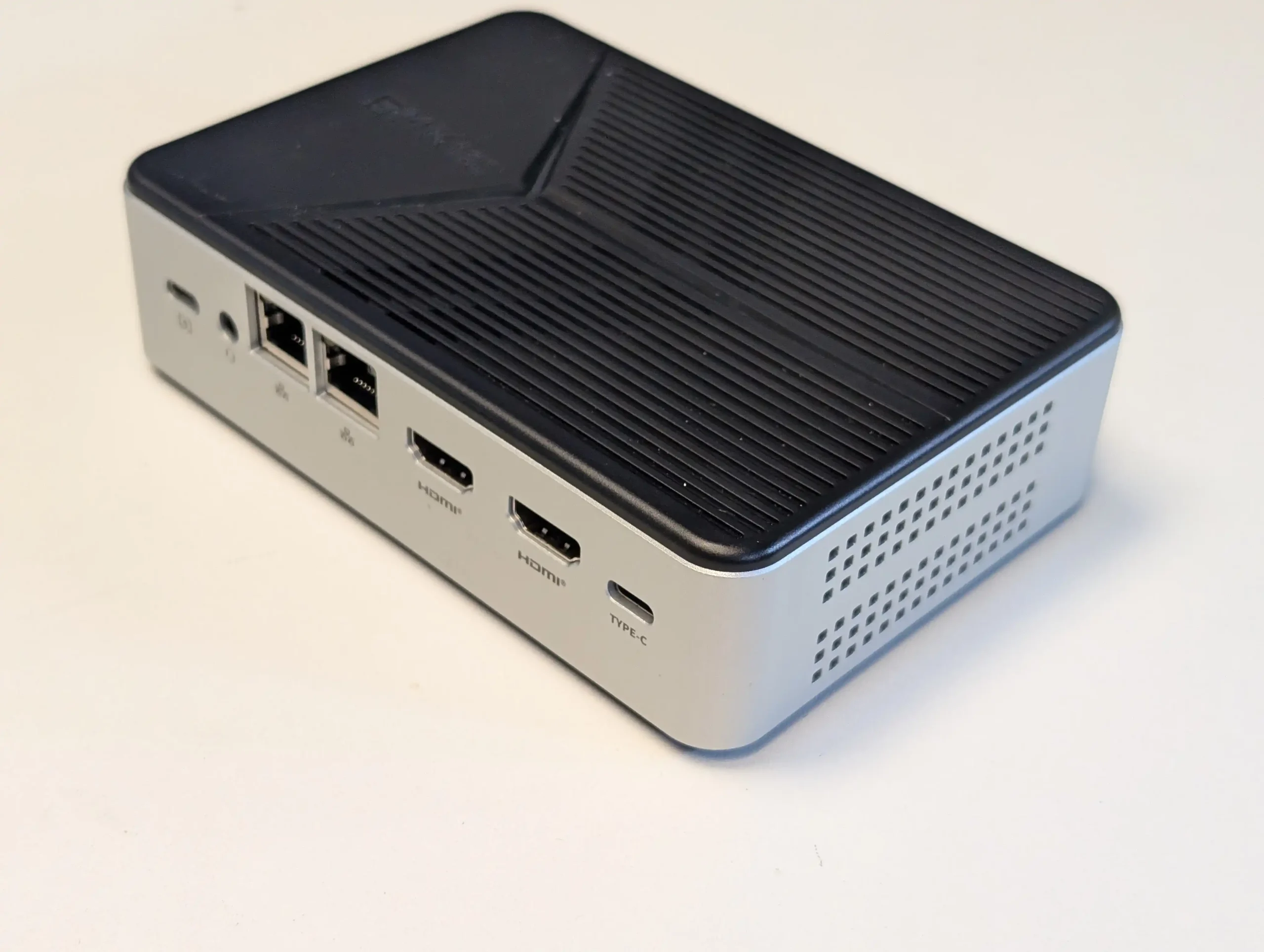
Why Have Chinese NAS Systems Rapidly Grown in Popularity?
The easy answer to this would be to say that they tend to be a lot cheaper than NAS products that are built in the US, Europe, or surrounding Eastern countries like Taiwan or Japan. Indeed, that is true, and you tend to find that NAS systems made in China are typically offered at great value price points and hardware value compared to anywhere else in the world. However, the popularity of Chinese NAS systems is actually a little bit more nuanced and about a lot more than simply money.
The UGREEN DXP NASync Series Now Globally Available
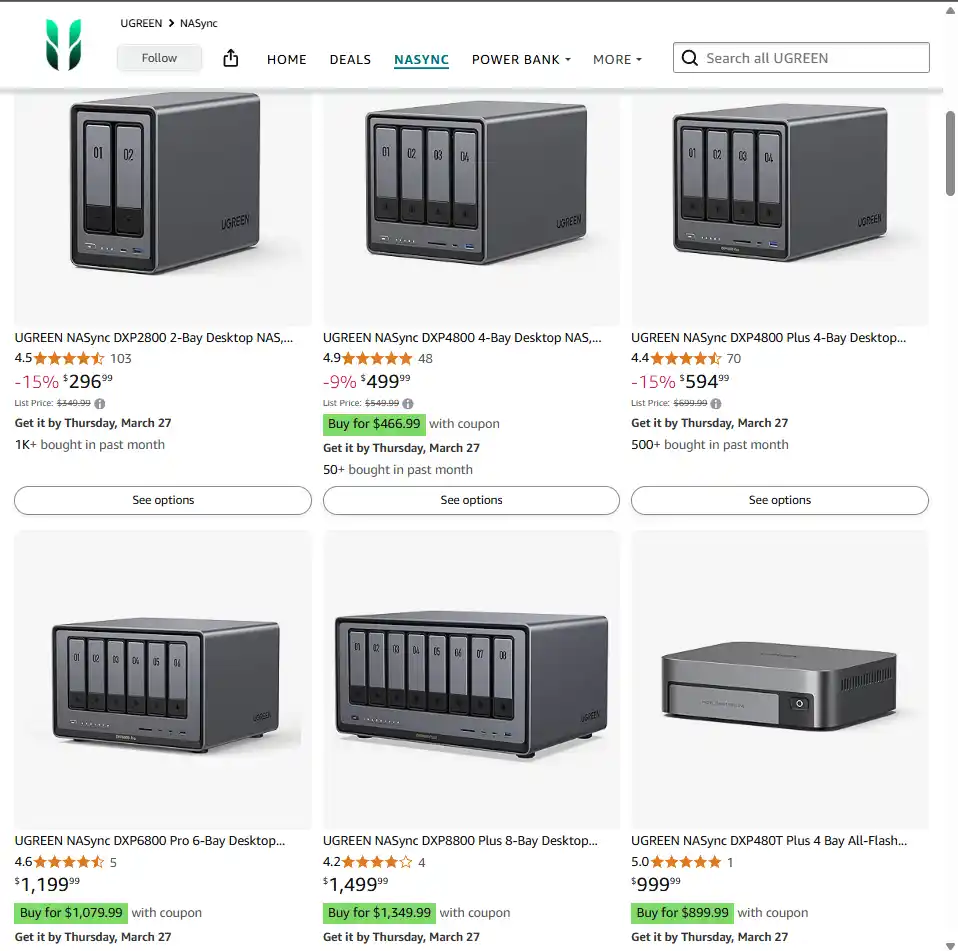
For a start, some of the brands that are currently moving into providing their own network-attached storage solutions are brands that already had a well-established presence in homes and offices around the globe for other peripherals. A great example of this would be Ugreen. Ugreen has provided accessories for PCs, power adaptors, and portable docking stations for quite a few years and is probably one of the most recognisable names for this kind of technology from China around the world.
The Aoostar WTR N305 4 Bay NAS Drive
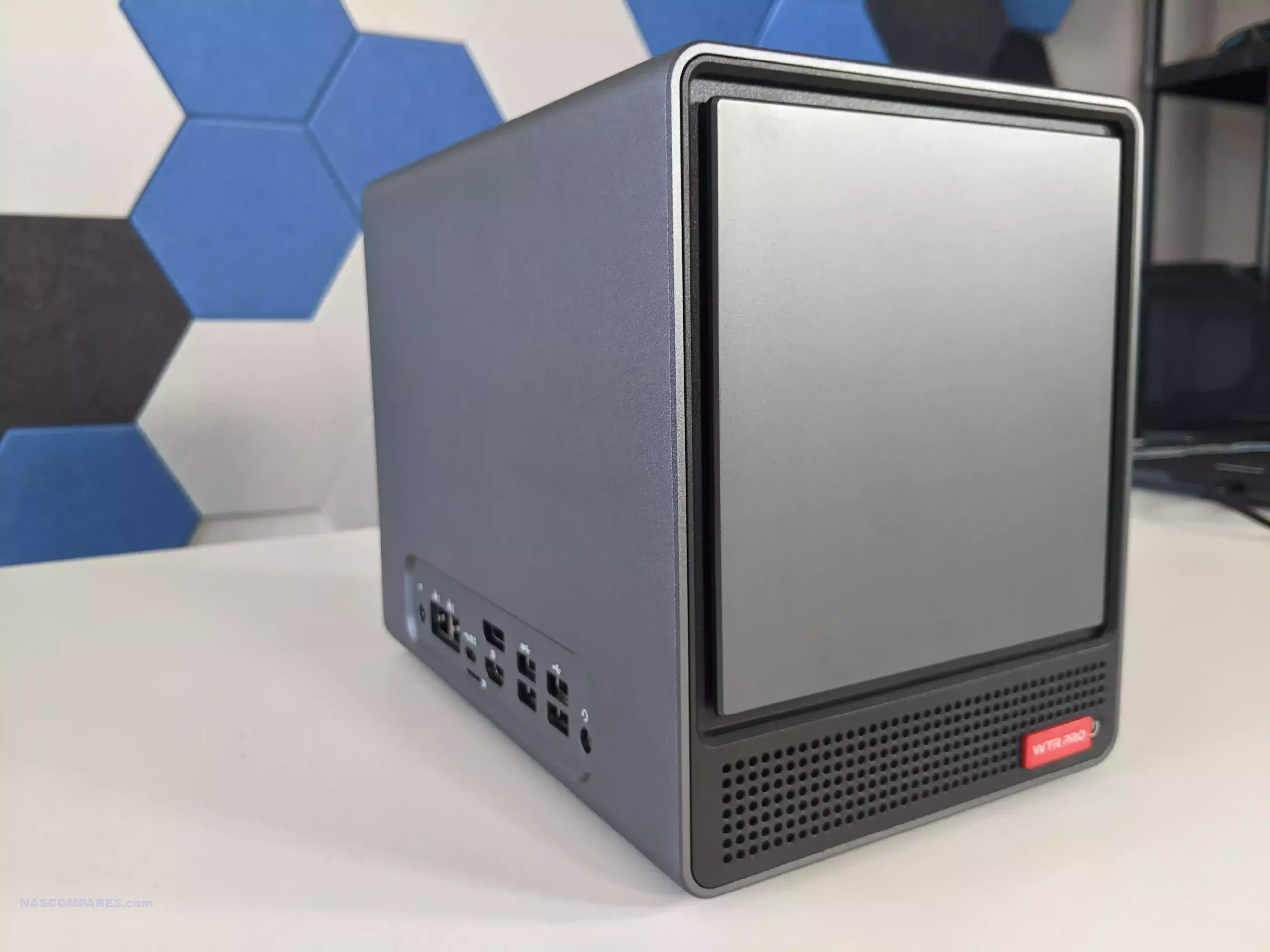
Therefore, in early 2024, when the brand announced it was entering the world of NAS in the Western world, the brand already had a fairly solid and well-documented audience in place. That is likely why the brand, although still pretty good value, is actually slightly more expensive than the majority of other Chinese NAS brands.
The Terramaster F6-424 Max NAS – 2x 10GbE, 2x Gen 4×4 M.2 NVMe & Intel i5 CPU
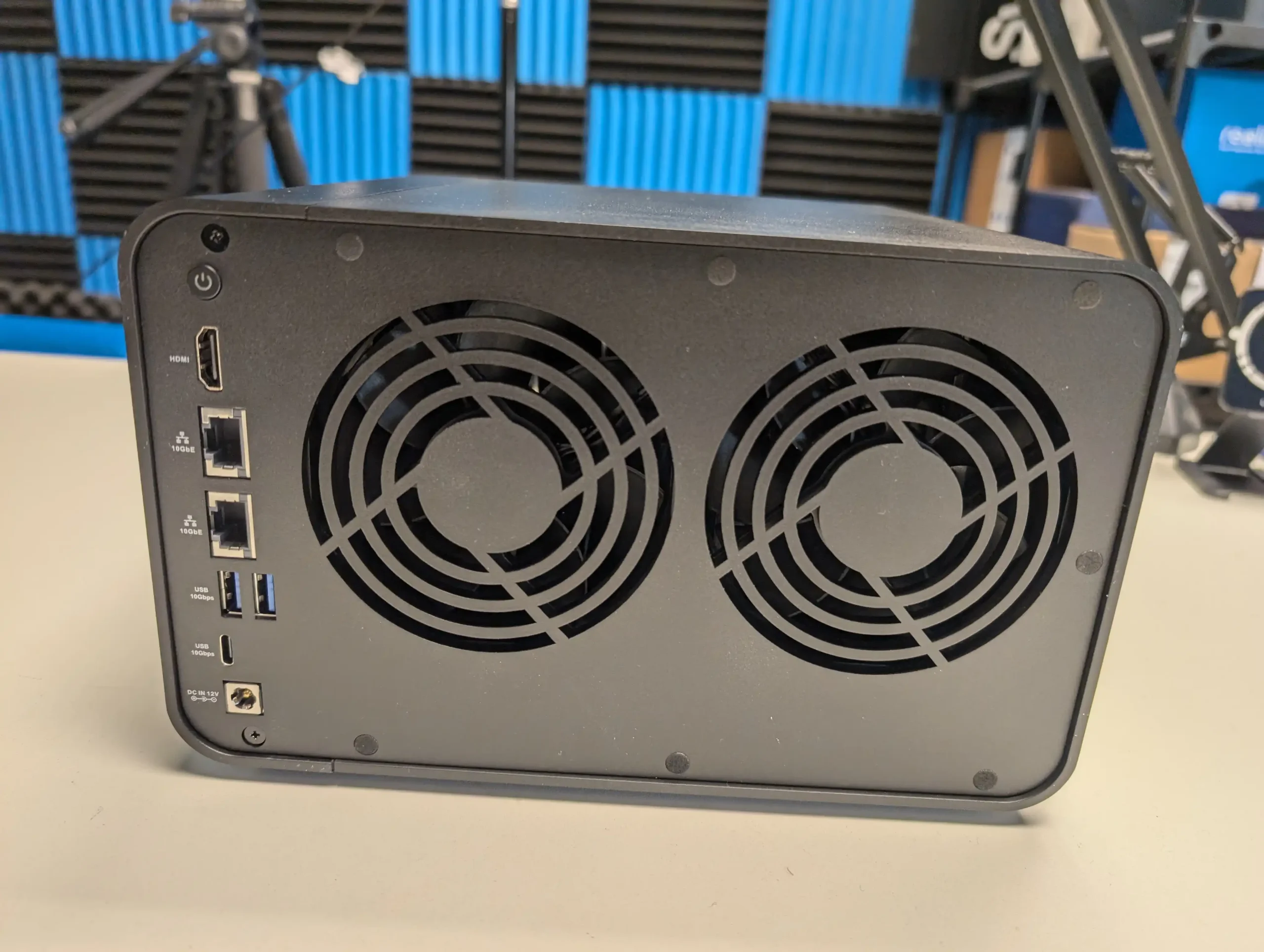
Alternatively, you have brands like Terramaster, who have been in the network-attached storage industry for over half as long as the likes of QNAP and Synology, and during that time have built up a fairly solid audience base long before the arguably heavy influx of smaller, lesser-known brands entering the world of NAS from China.
The Terramaster F6-424 Max NAS – 2x 10GbE, 2x Gen 4×4 M.2 NVMe & Intel i5 CPU

Chiefly purchased for its hardware until now, Terramaster is a brand that has a fairly comprehensive and well-detailed software platform in TOS. Of course, both of these brands provide much better value for money than alternatives in the market from other countries, but in a lot of cases, people are purchasing these solutions for more than just the bottom-line price.
The Lincplus Lincstation N1 & N2 4x M.2 and 10GbE NAS
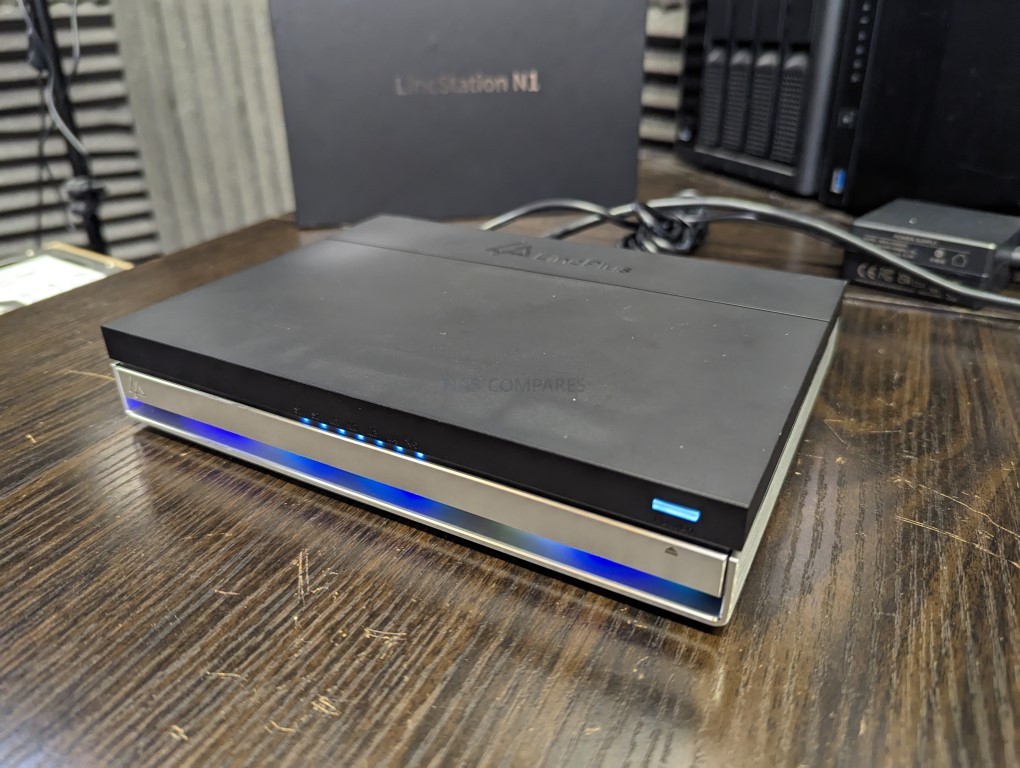
Alternatively, there is the now heavily saturated market of mini PC vendors who have modified a lot of their existing production and systems to now leverage towards storage. In many cases, some of these brands—such as Minisforum and GMKTec—already have a healthy relationship with consumers thanks to their mini PCs, and that brand awareness has clearly transferred over to NAS products.
The Minisforum N5 Pro NAS – AMD i9 HX370 / ECC Memory / 10+5GbE / 5 SATA and 3 M.2 NVMe
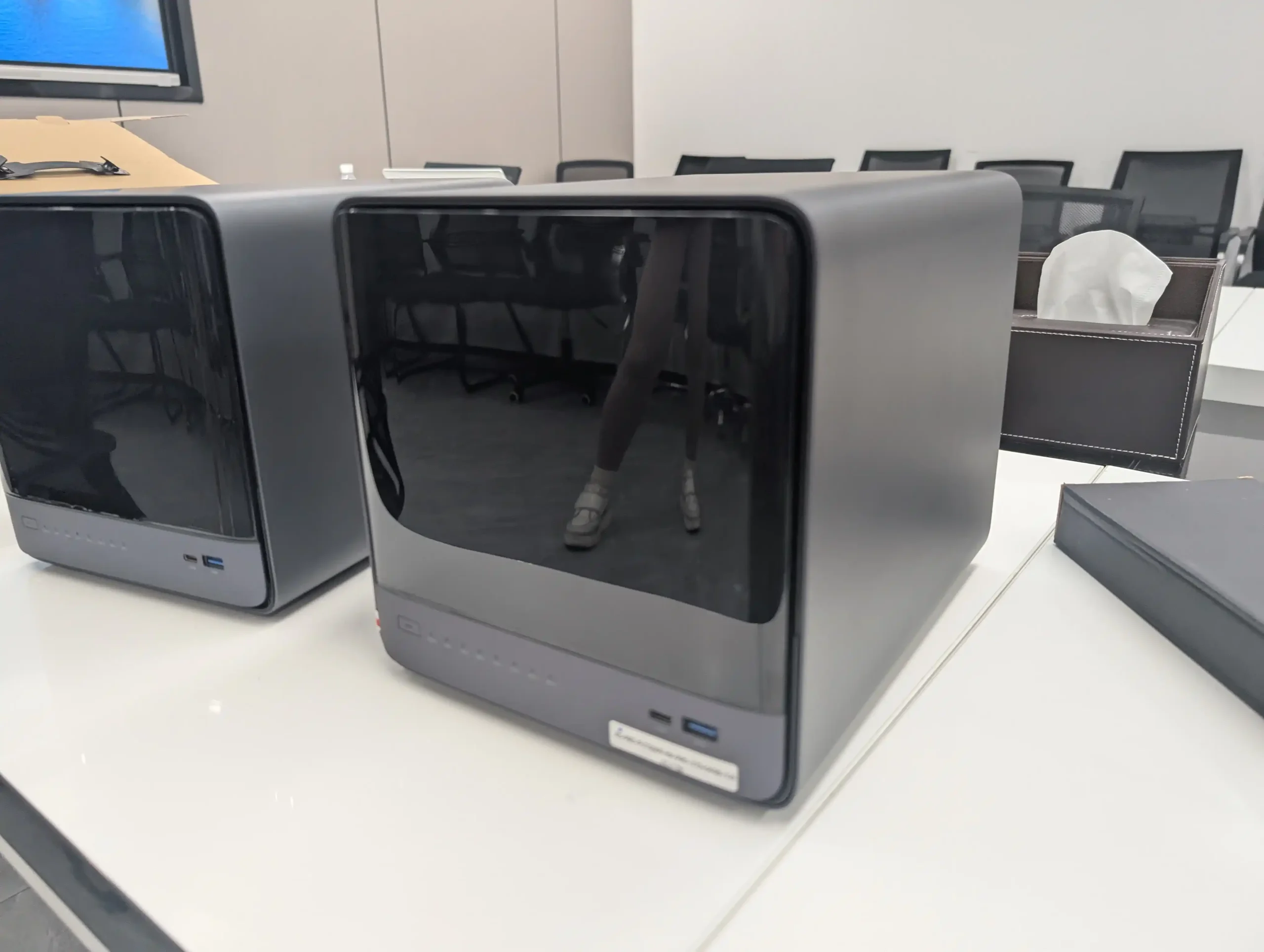
The other thing that makes these Chinese NAS products very appealing to new and even old NAS buyers is that a lot of them arrive without software included. This allows users to get just the hardware at a lower price and then go ahead and install software such as TrueNAS or UnRAID, because they want to take advantage of those more flexible (if slightly more intimidating) platforms. The majority of NAS products that arrive from other countries tend to arrive with their own NAS software included and, more often than not, do not allow the warranty to continue being supported if you install a third-party operating system. Whereas practically all NAS products that are developed in China tend to allow you to use third-party operating systems—even when they include their own OS (again, see Terramaster and Ugreen).
What Are the Benefits of Chinese NAS Systems?
Ultimately—and it’s kind of a shame that this is the headline here—but it is, of course, that NAS systems from China will generally give you much better hardware at a lower price tag. That isn’t to say that these systems are always going to be universally the lowest price, but it is simply that the average price tag of the system configuration and hardware, compared across multiple regions, will generally always end in the product being cheaper when it is manufactured in China.
UGREEN DXP8800 PLUS NAS – 10GbEx2, Intel i5 CPU, Gen 4×4 NVMe
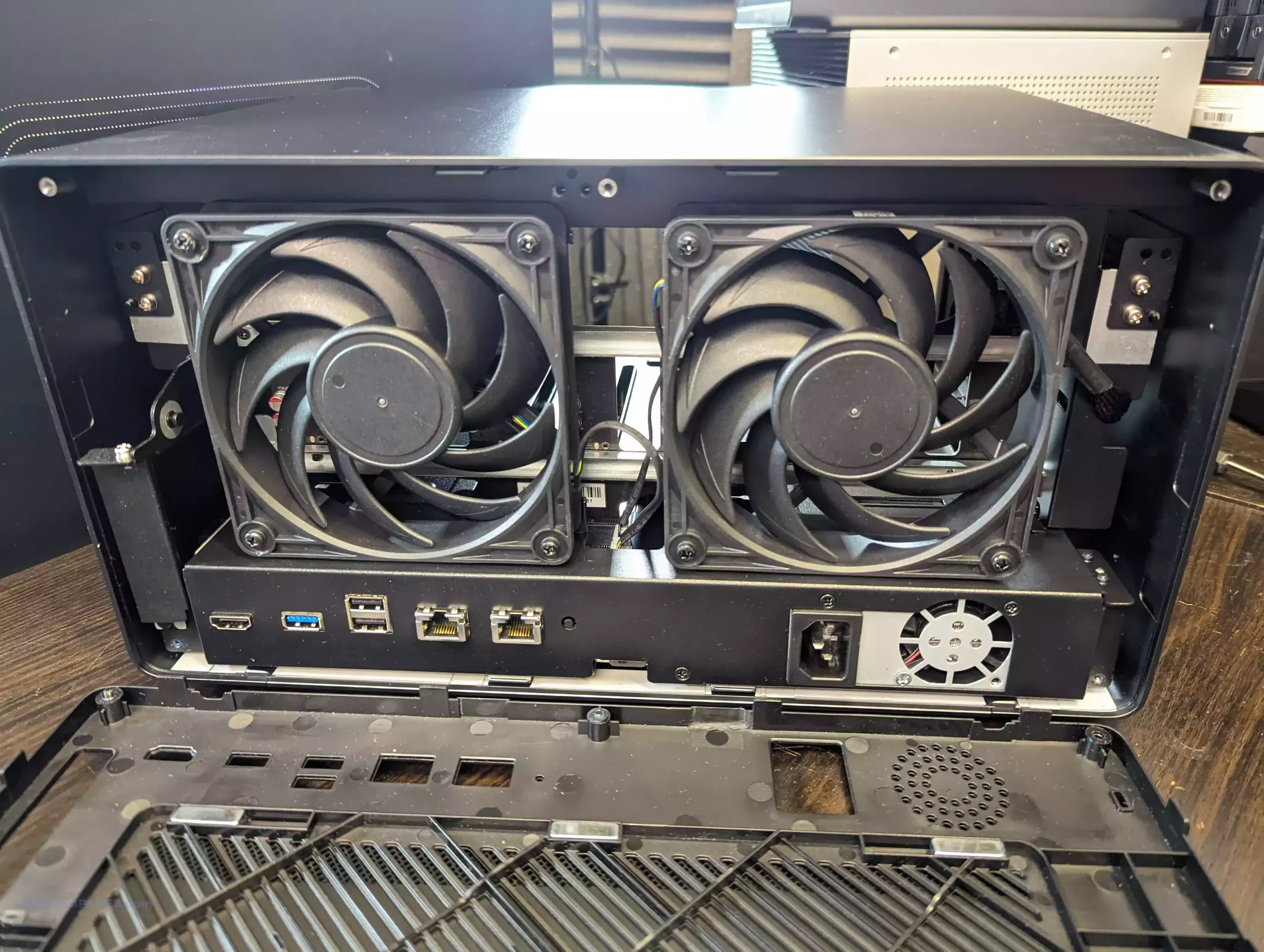
More often than not, whether you’re looking at a fairly modest entry-level Intel Celeron / Intel Alder Lake / Intel Twin Lake-based NAS system or scaling it up all the way towards Intel Core and AMD Ryzen systems, you will tend to find that NAS solutions built in China are as much as 25 to 30% lower in price than those made in the rest of the world.
The UnifyDrive UP6 6x NM.2 NVMe SSD Portable NAS

I guess you could also add that if you are based in the Eastern part of the world, there are also tremendous benefits to these solutions being so readily available and accessible. Indeed, on a recent trip to Shenzhen, I noticed how there were significantly more DIY NAS solutions available on the high street and in the tech malls than anywhere else in the world. A big part of this is that the general average standard understanding of tech hardware is higher out there than in a lot of Western regions. That isn’t to say that we don’t have a tremendously high volume of users who understand this kind of technology in the US and Europe, but the way it is framed to the consumer is notably different.
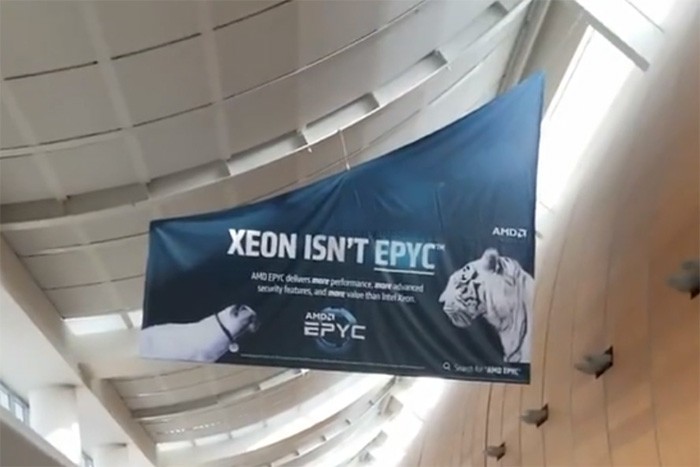
So, for example, if you walk around an airport in China, Hong Kong, or Taiwan, you will often see advertisements of a pretty technical nature with regard to CPUs and graphics cards on the back of trolleys, billboards, and on the sides of public vehicles. Whereas in America and Europe—although this is still not completely absent—adverts are much more focused on the end product, such as phones, tablets, laptops, and domestic client hardware.
Why Are People So Concerned About Chinese NAS System Security?
It is a pretty bloody valid concern! In recent years, tensions between large countries with regards to trade have been on the rise—one of the biggest being the US–China trade war, which, although it has ebbed and flowed over the last seven or eight years, is actually something that has existed for a few decades now. It largely boils down to the import and export of this kind of technology. However, the breaking point came when several Chinese products were found to contain spyware and malware that was hard-baked into the hardware and allowed for remote collection of user data. Numerous brands were implicated, and the fact that there is a degree of ambiguity between numerous Chinese brands in the eyes of the world—regarding how many of them cross over at the point of manufacture and how many of them are on the same production line filtering toward various brands—all added up to increased tensions and, eventually, several companies and organisations being barred from sale in the US.
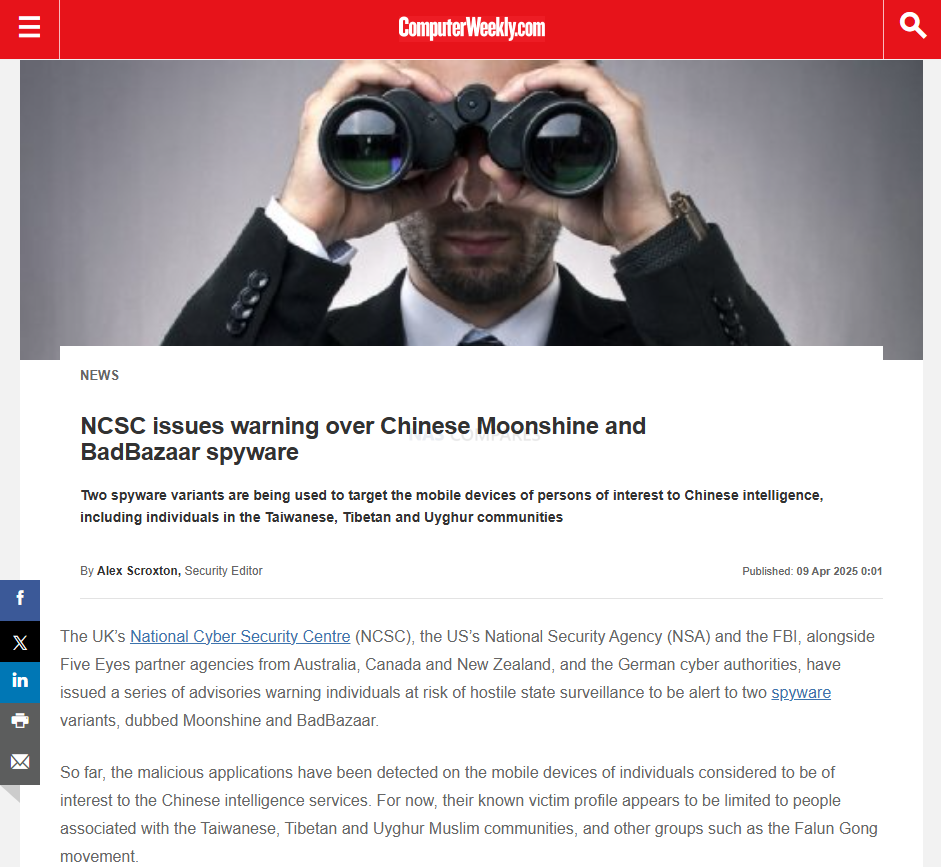
How much this has been respected by certain Chinese players in the past—I am not going to blanket-tarnish all Chinese brands with this, as that would be both unfair and hugely incorrect. Nevertheless, a small group of bad apples has certainly soured the mood for many when it comes to purchasing Chinese NAS products in terms of security, especially when it is noted that these systems will be on 24/7, contain all of your data, and, in many cases, are directly or indirectly connected to the internet depending on your own personal setup.
Source: https://www.security.com/threat-intelligence/us-china-espionage/
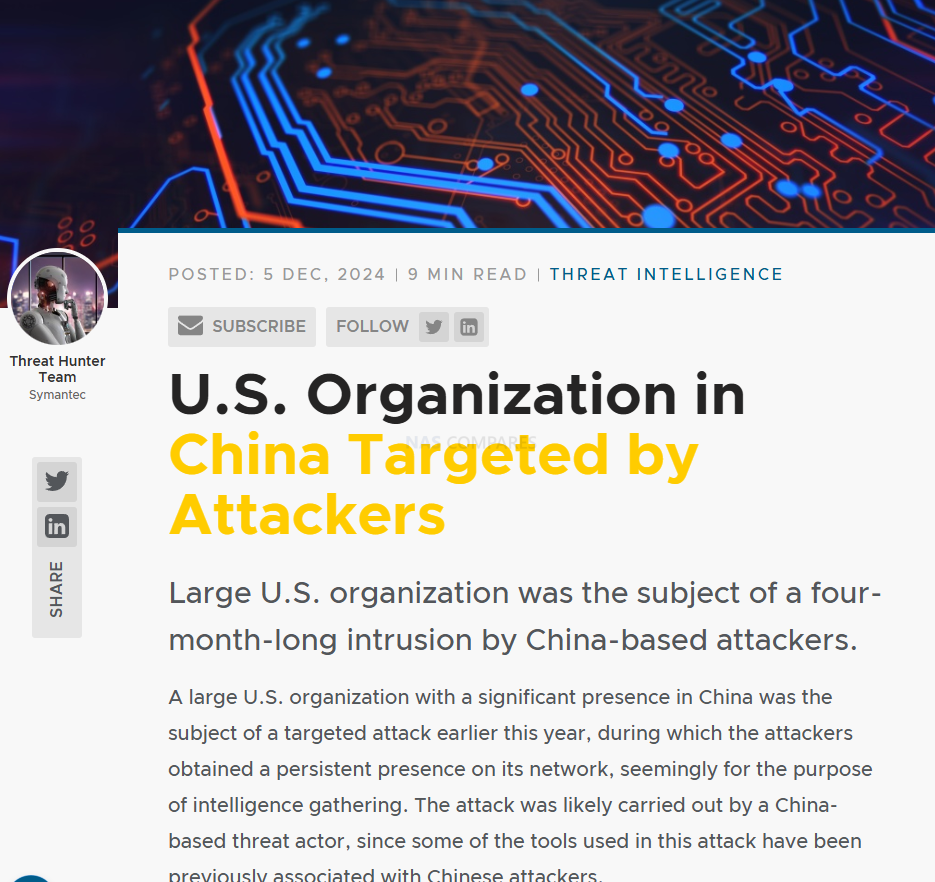
This is one of the main reasons why a lot of users will purchase a Chinese NAS product specifically if it does not arrive with any kind of included operating system. A lot of users would rather trust established and Western-orientated NAS brands such as TrueNAS and UnRAID, as these have a proven track record of firmware updates and security tools, but also have recognised vulnerability and security disclosure programs that they work with to be held accountable in the event of any security incident being recognised. Nevertheless, on numerous occasions, it has been noted that security vulnerabilities—and the aforementioned spyware, when it has been recognised—have been hard-baked into the hardware components and physical controllers, which means that regardless of the NAS software you use, some of these devices still have the potential to contain security vulnerabilities.
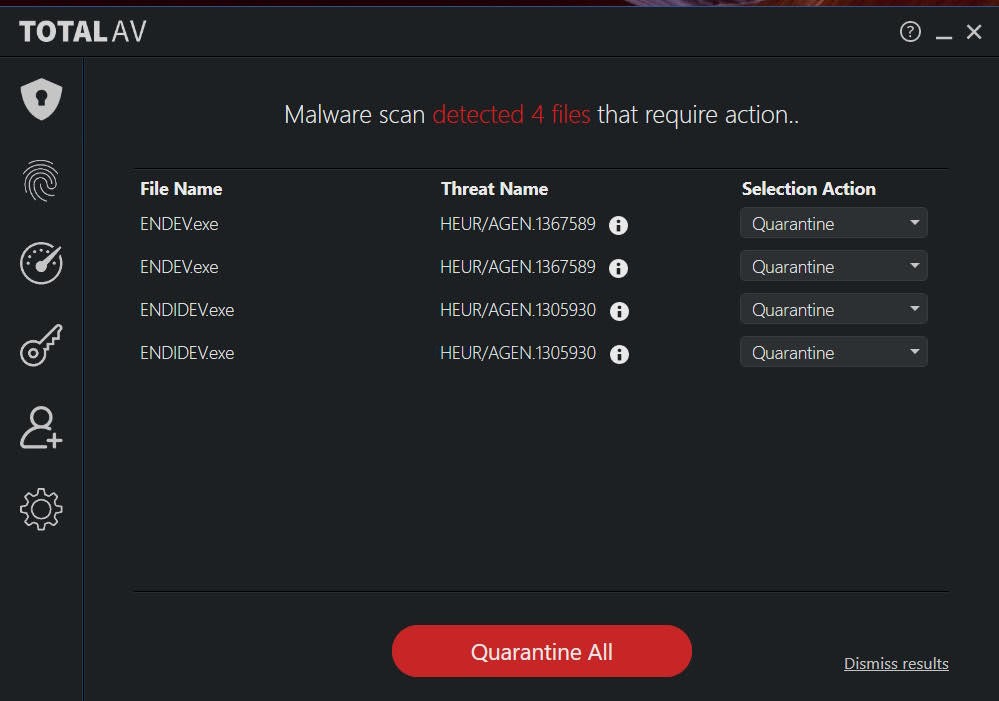
Now, playing devil’s advocate, it could actually be possible for any hardware manufacturer in any country in the world to implement these kinds of security breach methodologies into their hardware. When you really break it down, the architecture of a NAS device—regardless of where it is built in the world—is going to be largely similar to that of a standard PC, and therefore the opportunities for exploitation and manipulation are still going to be on the table. Nevertheless, although it has been recognised that different regions of the world have had their own bad actors who have introduced vulnerable devices into the market unbeknownst to end users, there is still no avoiding that the lion’s share of the manufacturers found culpable for this have been based in China.
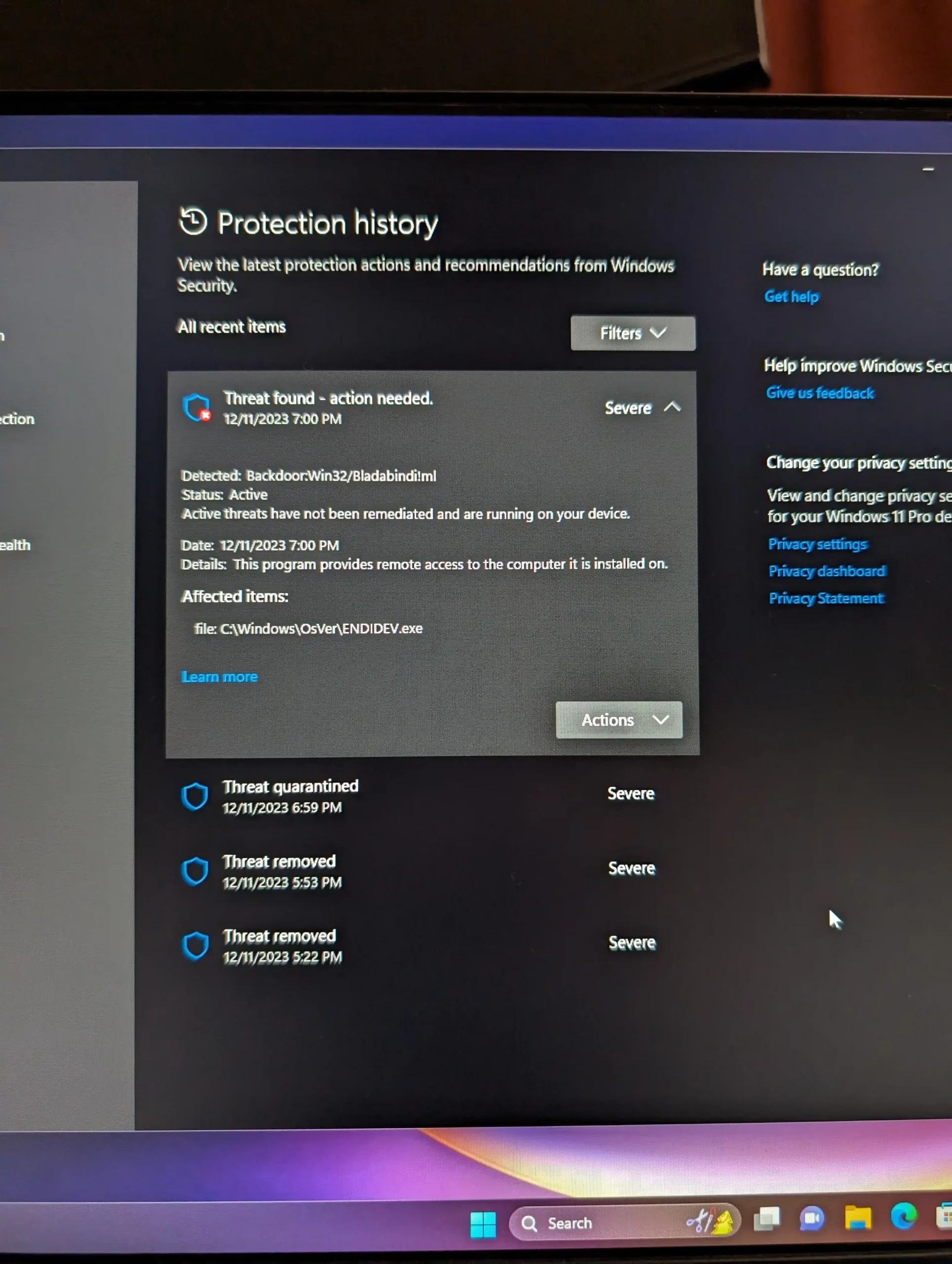
However, we also have to be slightly reasonable in that, given the larger share of hardware that is manufactured and distributed from China, then statistically, they are always going to have the larger number of incidents. The propaganda machine of numerous nations will always be at play to present a particular picture of the safety of imported devices, but all that aside, it does still seem that—despite instances of systems with inbuilt vulnerabilities decreasing all the time—they do crop up more frequently in products made in China than anywhere else in the world.

Should this be a reason to completely disregard purchasing a NAS solution from China? No, I don’t think so. I think it is a good reason to investigate the brand or organisation that you’re choosing to purchase from. I think it is a good reason to investigate how long a company has been in operation and to find out more about their offices and operations before making a purchase. And I do think it is all the more reason why organisations should not automatically assume that any piece of hardware from anywhere in the world is automatically the most secure out of the box, and should be implementing their own firewalls, VPNs, authentication methods, and security protocols regardless.
Remote Accessing My Chinese NAS – Alternatives to the Host OS
If you’re hesitant to use the default remote access features provided by your Chinese-made NAS due to privacy, transparency, or security concerns, you’re not alone—and thankfully, there are much safer and more trusted options available.
One of the most popular and user-friendly tools in this space is Tailscale, a modern mesh VPN built on WireGuard. Tailscale allows you to securely access your NAS (or any other device on your network) from anywhere in the world—without the need for risky port forwarding, dynamic DNS, or vendor cloud logins. With just a few clicks, you can create a private, end-to-end encrypted network between your NAS, phone, tablet, and computers, all managed via a clean web dashboard. It works across firewalls, NAT, and even CGNAT (carrier-grade NAT), which makes it ideal for less technical users looking for peace of mind when accessing their files remotely.
For those who want more customization or are working in slightly more advanced environments, there are other powerful self-hosted or cloud-assisted VPN solutions worth considering. Tools like ZeroTier allow for flexible, programmable virtual networks with global peer-to-peer routing. Meanwhile, OpenVPN and WireGuard (standalone) offer rock-solid, time-tested security for users comfortable with deploying and managing their own VPN servers. These services can be installed directly on your NAS or hosted on another home server or Raspberry Pi on the same network, offering complete control over who gets access and how. If you’re running TrueNAS, UnRAID, or even Debian/Ubuntu-based DIY NAS software, many of these can be installed natively or through Docker containers. This means you can completely bypass the vendor-supplied cloud services, eliminating a major attack surface while retaining secure access from anywhere.
Here are some of the most reliable and widely recommended remote access alternatives:
-
🔒 Tailscale – Simple, secure mesh VPN using WireGuard; ideal for non-technical users
-
🌐 ZeroTier – Virtual network overlay with programmable access control and P2P routing
-
🔐 WireGuard (standalone) – Lightweight, fast, and secure VPN for advanced users
-
🧰 OpenVPN – A well-established, highly configurable VPN solution
-
🐳 Dockerized Access Tools – Solutions like Headscale (Tailscale self-hosted), PiVPN, or Cloudflare Tunnel
-
☁️ Cloudflare Tunnel (Argo Tunnel) – Secure reverse proxy with public access protection
-
🧠 FRP (Fast Reverse Proxy) – Lightweight self-hosted tunnel service often used in Chinese networks
-
📱 Syncthing – Peer-to-peer file sync tool for remote file access without VPN (for specific folders)
Using any of these tools, you can confidently disable or ignore the default remote access features provided by your NAS vendor and instead implement a hardened, trusted, and fully auditable solution. In doing so, you’re minimizing potential exposure, maintaining privacy, and ensuring that your remote access setup is under your control—not in the hands of a third-party vendor.
Should Users Be Concerned About Support?
Alongside the ever-present concerns around security, the other big issue that users tend to mention about purchasing Chinese NAS products is to do with support. It’s not unusual for a product or solution that you purchase in the market to not have a local or regional office that you can talk to in the event of hardware faults or software difficulties. Just because a product is manufactured in China doesn’t mean it’s the only one that suffers from the geographical hurdles of purchasing a system built in a completely different country than your own.
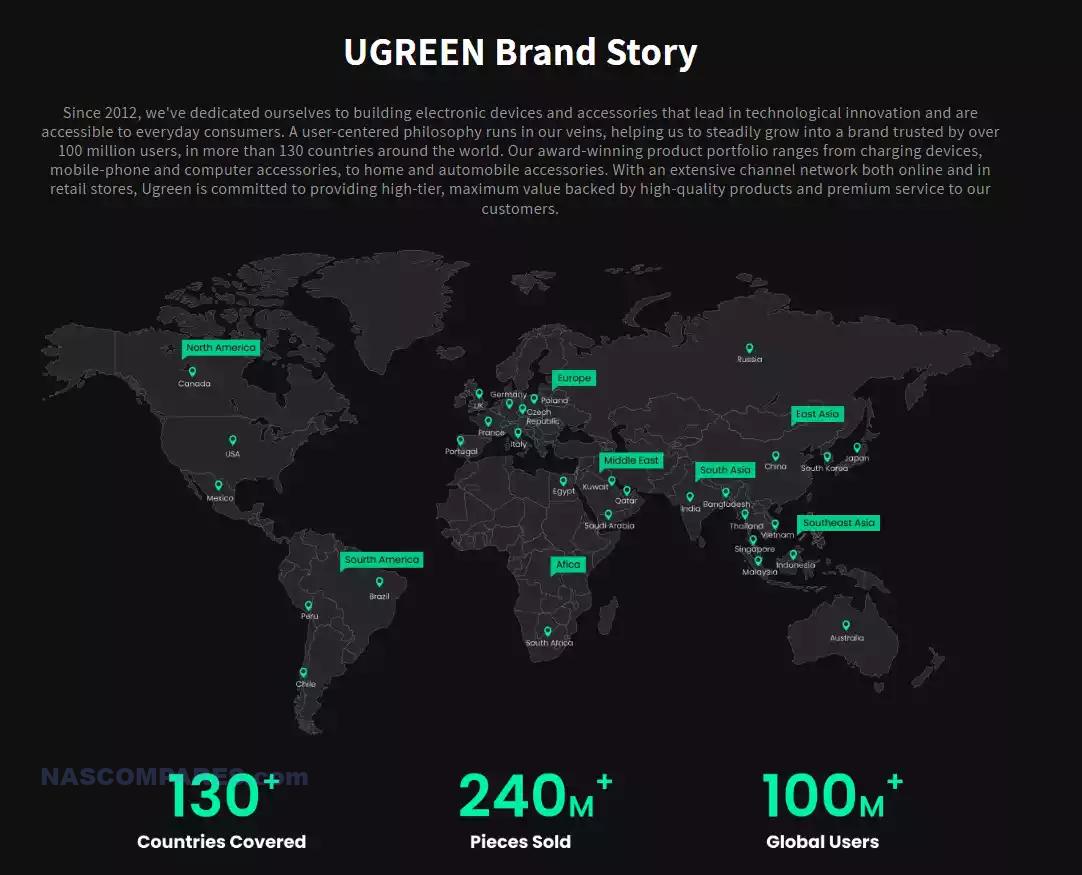
For example, there are plenty of American manufacturers that do not have any regional offices in Europe, and most support is provided remotely. In those cases, what puts support for products made in China into a different category for many is:
-
Language and cultural differences in communication between end users and the brand, and
-
The logistical difficulties of replacing a malfunctioning device with a replacement or repair.
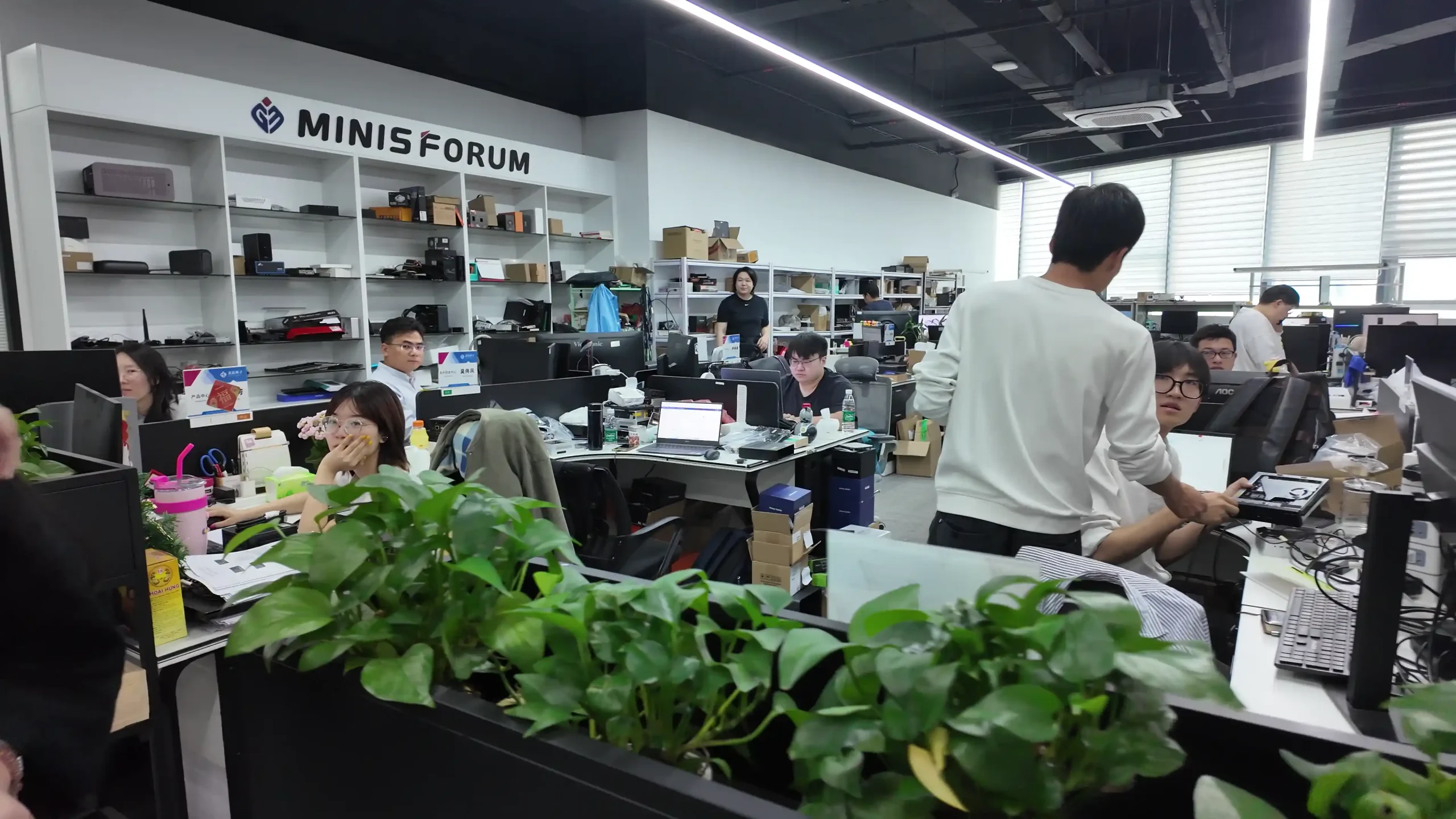
Most of us are quite familiar with—and are happy to accept—that issues occur in the day-to-day operations of most large-scale mass manufacturing production lines. Even high production lines with a 0.01% failure rate, once you break into the million units, are still going to result in a handful of users who might receive a unit that is less than fully operational. But alongside the delays of swapping a bad device for a good one, other hurdles such as time zone differences and potential tax issues upon devices travelling internationally need to be considered. Many of these issues are not any one country’s fault and are just part and parcel of global trade that’s ever-present in any technology. However, it is how certain Chinese brands negotiate these many hurdles when selling goods to the US and Europe that very quickly sets apart the good organisations from the bad ones.
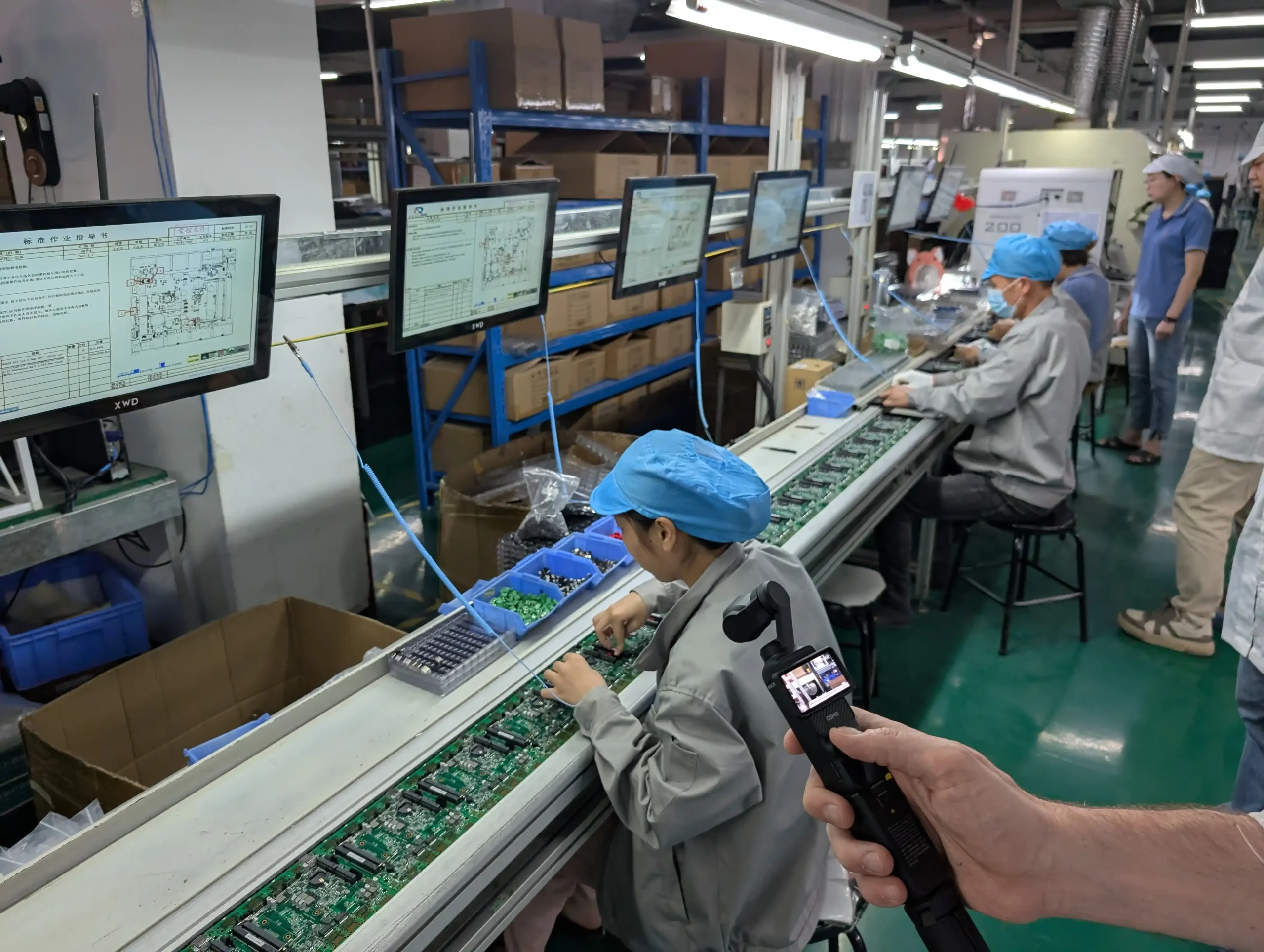
In my years reviewing and installing different Chinese NAS solutions, some brands have definitely stood out more than others in terms of their support. For example, in the past 2 years, I have heard significantly more positive warranty/repair threads for CWWK, Jonsbo, and Terramaster than I have for brands like GMKtec, B-Link, or pretty much any brand that only seems to exist on AliExpress and Alibaba but has practically no in-house website or Western presence. That isn’t to say that those first few companies I mentioned have a 100% success rate—definitely not. Some simple Googling will always find you both good and bad instances. However, broadly, I’ve had better feedback from people I have provided support for and from numerous NAS subreddits for those brands than I have for some of the lesser-known and far more isolated organisations.

Another point to highlight is that some of the lesser-known brands are simply reusing existing designs and hardware architecture provided by an original manufacturer and relabelling it as their own. For example, CWWK manufactures a large amount of the hardware solutions you may see in the market, but it just so happens that they are sold to contractors and lesser-known providers who then apply their own manufacturer’s badge.
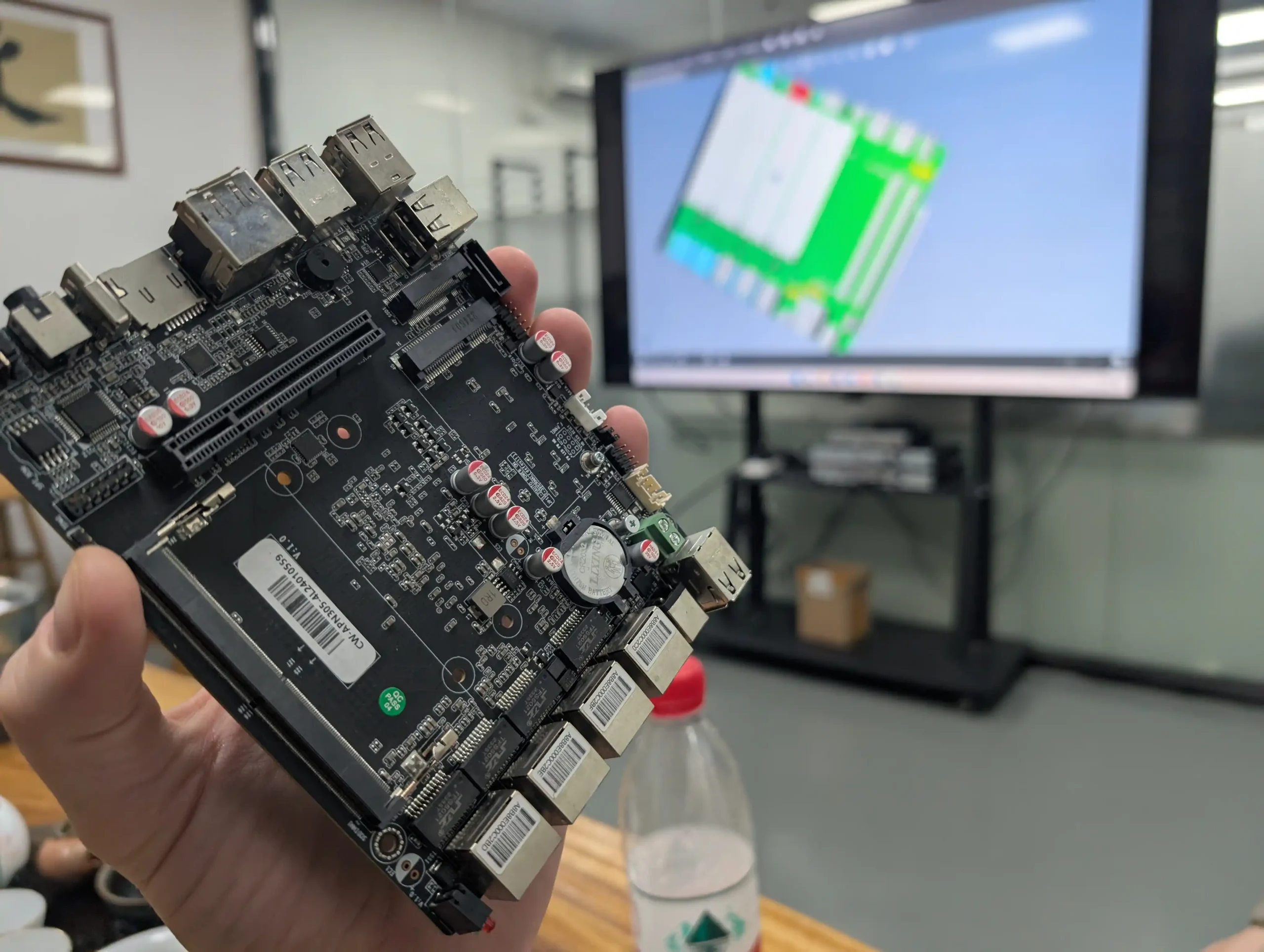
Where this becomes a problem with support is that if you encounter an issue with your hardware, the relabelled and rebadged name that’s been applied to that CWWK product can only provide limited support and even weaker hardware repair, as they are heavily reliant on the original manufacturer and their own production lines.
In these cases, I once again heavily recommend that if you are going to purchase any Chinese NAS product, that you go to the source. And circling back to the issue of security I mentioned earlier on, you tend to find that when spyware has been found on some hardware systems, it has been due to software that was applied to the hardware after it left the original manufacturer—more often than not, applied within an .exe found autoloading in the included copy of Windows.

So once again, double-check that the brand you’re talking to is the original manufacturer before you purchase a Chinese NAS solution, and double-check that they have some kind of Western presence first. It may seem almost obvious and naïve to say this, but ultimately, a lot of these organisations operate on tremendously thin profit margins. This means that the cost of manpower and hiring sufficiently skilled people to create these Western websites and English-understood points of sale is often left by the wayside by the less scrupulous organisations, as they simply do not have a clear enough print-to-profit or long-term strategy to provide solutions they can trust in order to engage with this.
Should I Buy a NAS from China?
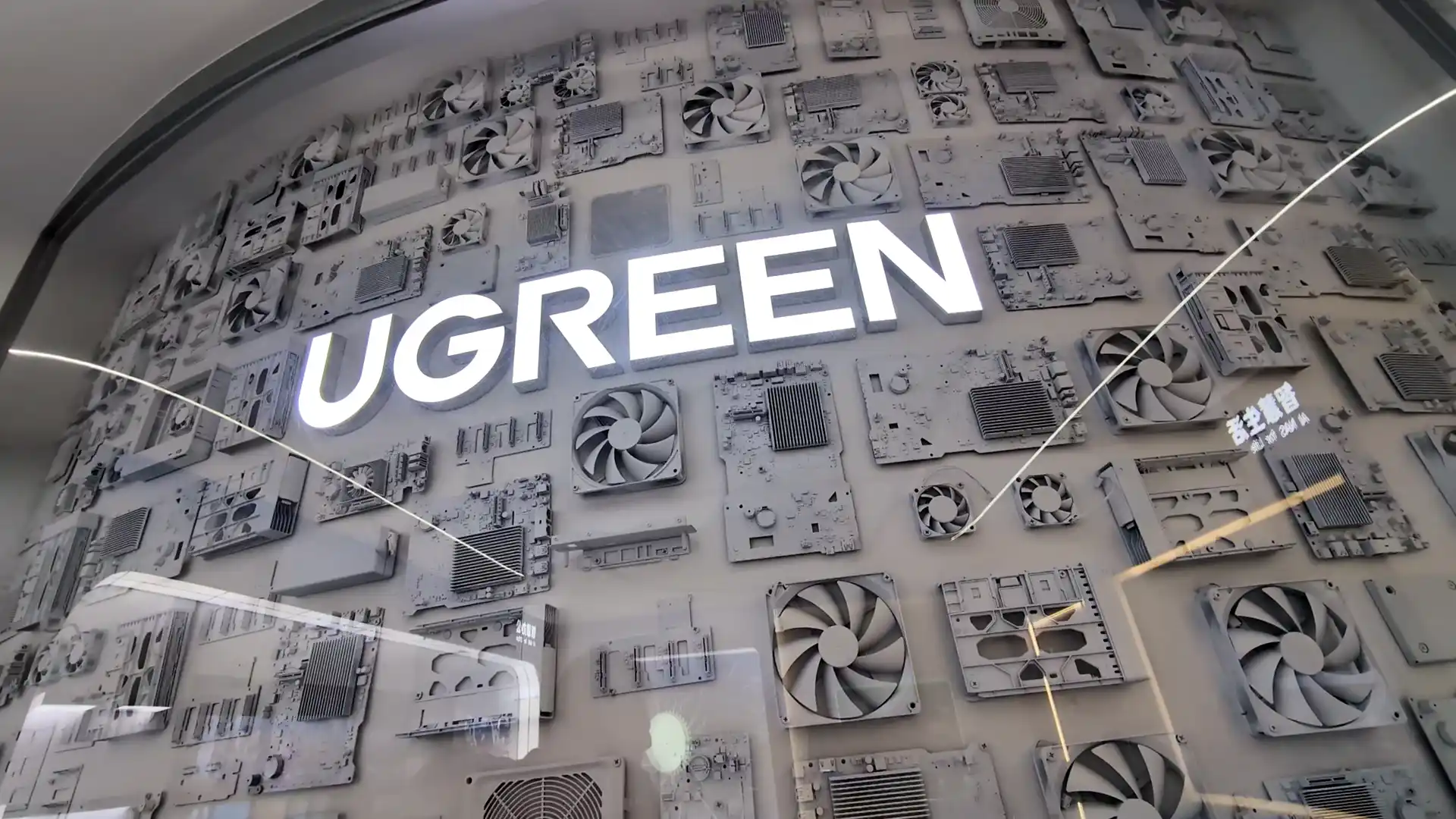
The short answer? Yes, I think you can. You should be as security-aware as (frankly) you should be with any NAS product—as any 24/7 data storage solution is only one vulnerability away from being compromised. But as long as you know the risks and understand that support is not going to be as “next day” as it would be if you purchased a local product, I do genuinely think that you are okay to buy a Chinese NAS solution from the more well-known and reputable brands in the market. If the brand doesn’t have much of an online presence outside of China—even doesn’t really have much of its own website outside of AliExpress, Amazon, or Alibaba—avoid them like the plague! Because those brands that aren’t prepared to make even the token effort to have much of an online presence outside of a retail website have certainly not got the profit margin to provide any kind of meaningful support and are more likely to cut corners. Worse still, it is those organisations that have such slim profit margins that are almost certainly going to be the ones that may be more susceptible to influence in installing exploitative or malware software components on their systems for an additional backhand payment.
Chinese NAS Brands That I Recommend
These are the brands I would personally recommend if you are considering a China-based NAS brand. These are 6 brands that I have used many of their products (NAS and others) that I have found the best experiences with, as well as, on balance,e the best online support and communication. No brand is perfect, and look hard enough and you will find good and bad on any brand, really, but these are six examples of brands that stand out from the others.

|

|

|
|

|

|
📧 SUBSCRIBE TO OUR NEWSLETTER 🔔
🔒 Join Inner Circle
Get an alert every time something gets added to this specific article!
This description contains links to Amazon. These links will take you to some of the products mentioned in today's content. As an Amazon Associate, I earn from qualifying purchases. Visit the NASCompares Deal Finder to find the best place to buy this device in your region, based on Service, Support and Reputation - Just Search for your NAS Drive in the Box Below
Need Advice on Data Storage from an Expert?
Finally, for free advice about your setup, just leave a message in the comments below here at NASCompares.com and we will get back to you. Need Help?
Where possible (and where appropriate) please provide as much information about your requirements, as then I can arrange the best answer and solution to your needs. Do not worry about your e-mail address being required, it will NOT be used in a mailing list and will NOT be used in any way other than to respond to your enquiry.
Need Help?
Where possible (and where appropriate) please provide as much information about your requirements, as then I can arrange the best answer and solution to your needs. Do not worry about your e-mail address being required, it will NOT be used in a mailing list and will NOT be used in any way other than to respond to your enquiry.

|
 |
Why People Use TrueNAS, UnRAID and Proxmox to Turnkey NAS (Synology, QNAP, etc)
Why People Prefer Turnkey NAS vs TrueNAS, UnRAID and More
The Top 5 Mistakes NAS Buyers Make
Top 5 PLEX/Jellyfin NAS of 2025
Seagate Ironwolf vs WD Red NAS Hard Drives
The BEST NAS of 2025
Access content via Patreon or KO-FI
Discover more from NAS Compares
Subscribe to get the latest posts sent to your email.


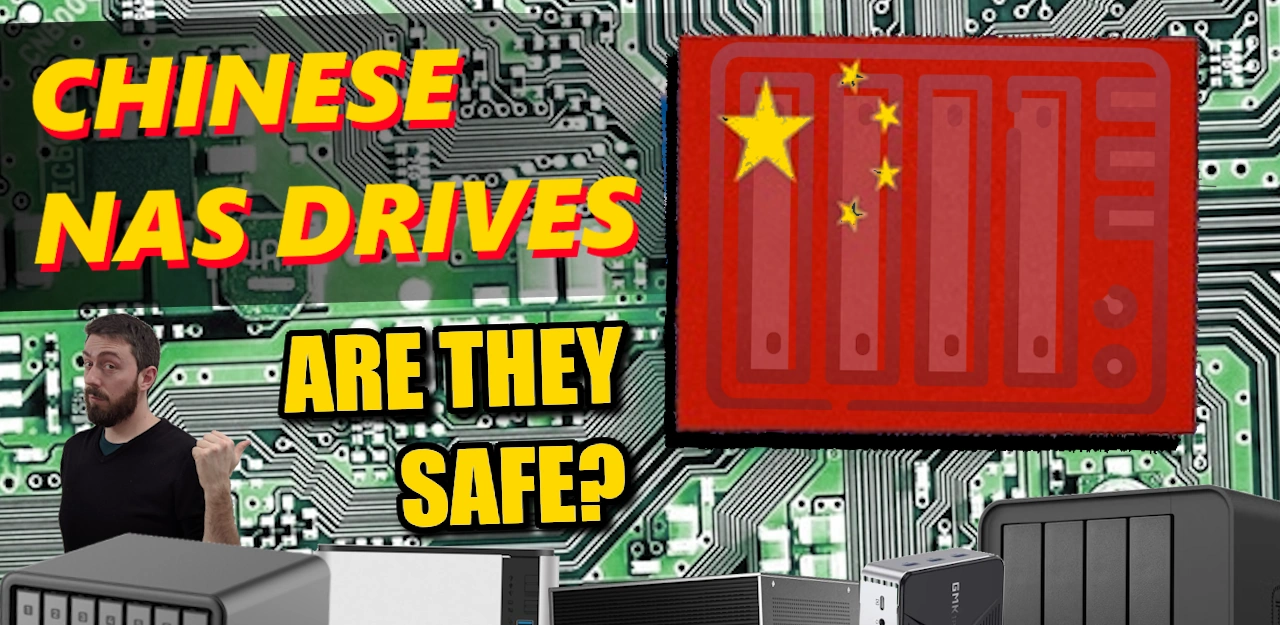



Very professional factory complex.No question about the quality from what we saw
REPLY ON YOUTUBE
I like the flexibility that comes with Thiese nas. Security? Dont think Thiese nas are worse than others. It depends how you set up youre nas
REPLY ON YOUTUBE
The quality of production is similar to MSI. What these Chinese companies lack are basics that Western buyers need – searchable product numbers for each product, and a website with product specifications and downloads for the manual, BIOS and drivers. They need a native English speaker.
REPLY ON YOUTUBE
Anyone know if those N355 boards with a pci-e x4 connector (Electrically 2x) can support a 2x10gbe x550 card? or should you go for single 10gbe card ?
REPLY ON YOUTUBE
Do a video on Israel and their control over cpus and motherboards.
REPLY ON YOUTUBE
As an American; If I had to have a discussion over the “safety” of a piece of computer equipment because it was “Chinese”; I’d skip the conversation and just by Synology or another non-Chinese option. I certainly wouldn’t buy Chinese just to save $500.00 or $600.00 dollars. My files, my network and my piece of mind are worth far more than that. :)????
REPLY ON YOUTUBE
Im wondering if there is somebody who knows this “brand” or “oem” company called BKHD.
I see a lot of parts used by other “brands” or “”oems”.
https://youtu.be/zshQgBGC9cY?si=rbTkTjW3ijYgA9dK
REPLY ON YOUTUBE
Tailscale is great for anyone who needs remote access and uploading capability. And securely connect back to your own server/NAS at home or office.
REPLY ON YOUTUBE
Pretty stupid paranoid people out there. No data can be sent out of your network NAS without you detecting it with monitoring software.
REPLY ON YOUTUBE
One issue you did not mention is that while the nice thing about many Chinese brands is how quickly they are bringing in new features, but that also is a problem, since the quicker you bring in new features the less chime you have to test them.
The second issue is that even if you buy kit from a Western company, it is highly likely that the internal components are made in China, so the hardware risks have a lot of similarity, The software risks may be different, but I would prefer to scratch install something like OpenMediaVault rather than rely on manufacturer supplied software to mitigate that risk.
Furthermore, while we do talk a lot about the CCP maybe asking manufacturers to insert back doors into Chinese software, it is not as if the NSA in the USA have not done similar. This is a problem, but not a uniquely Chinese problem (even though we like to pretend that our governments would never do anything as bad as that, but alas we just need to look at Stuxnet to see they are more than willing to do just that).
REPLY ON YOUTUBE
SMT Production Expert here 🙂 There are 1000 details in their factory that suggest that they know what they are doing. There are small tiny things that suggest that.
For example at 11:47 the lady is wearing finger condoms to not leave fingerprints, she has a soft stick to press some components. (They probably had occurrence of not soldered properly, smd caps can have malformed leads and don’t sit well on paste)
They definitely have proper procedures and it’s not show off for the camera. Good job to the manager of the facility 🙂
REPLY ON YOUTUBE
Wait, not Beelink??
REPLY ON YOUTUBE
So what isn’t a Chinese NAS?
REPLY ON YOUTUBE
I just asked Grok about the safety of Chinese NAS, and it brought up a great point. Synology and Qnap both manufacture in China… I don’t trust China, but it seems like they are all manufactured there even they are headquartered elsewhere. Are there any that are not manufactured in China?
REPLY ON YOUTUBE
For the people saying “yeah but im not that interesting”. What about this scenario? Say you have a health issue and your health insurer is on the hook for $100k medical bills. It would certainly be good business for them to find a data broker that has a back door into your data storage and see if there is any evidence to deny your claim. If that was on a reward based model then a data broker might very willingly invest effort into snooping chasing a $10k payday. I have contrived this scenario with no evidence, but it’s coming for sure.
REPLY ON YOUTUBE
I recently bought 2 Aoostar mini PCs direct from them, gem10 and gem12
Gem 10 i paired with their oculink nvme storage box which i will be using backups of my PCs and media etc running truenas
Gem12 is my compute box running proxmox and is fed storage from iSCSI from the gem10 as needed.
I’m considering isolating them on my network after watching this.
Any thoughts if its actually worth doing?
REPLY ON YOUTUBE
It wouldn’t bother me. I’m not that important. Besides, if China — or anyone else, for that matter — is going to collect all this data,how the hell are they going to collate it? A lot of this is just paranoia.
REPLY ON YOUTUBE
The level of fearmongering and propaganda put out around this stuff is huge. Basically they’d say China, Russia bad, USA UK, West, good. Everything is hackable and break in able if someone is determined enough.
Most people use cloud services every day – Google, Apple, Microsoft, Amazon have most people’s files, photos, documents, emails and messages. And they will have obvious backdoors, weaknesses and flaws for hackers, competitors or governments spying. And this will all happen domestically without your knowledge.
Nearly everything is made in China nowadays so we can choose to either get on with it or live in crippling fear or paranoia.
REPLY ON YOUTUBE
If you have a device connected to the internet it is being probed for vulnerabilities 24 hours a day 365 days a year.
REPLY ON YOUTUBE
ni hao maaaa! Are US NSA safe? Lets NEVER discuss it
REPLY ON YOUTUBE
*Support China??? What a disgrace!*
*The vast majority of people on this earth would declare that they would never have bought products from Hitler KZs that Jews had to produce.*
*But the whole world knows that millions of forced laborers in China must to produce products for the West – and everyone buys them!*
REPLY ON YOUTUBE
China has a law that all passwords belong to the government. So… if you think that’s safe, good luck.
REPLY ON YOUTUBE
Interesting! @Everyone: What would you say are possibilities to “infect” a device? I believe, it’s only pre-installed software. Are there other ones? Malicious chips or firmware? Imo, the latter is too conspirational.
Atm I’m building my second NAS. My first one is based on a Terramaster F4-423, but the only original parts are the mainboard, daughterboard, and the case. I installed Seagate HDDs and SSDs, removed the internal USB-Stick, and installed TrueNAS. Tbh, I don’t see an attack vector here. My second NAS is similar, but more DIY. It’s based on a Jonsbo N3 and an ITX mainboard from CWWK. Again everything else, RAM, HDDs, SSDs, etc. is purchased in Europe, wiped, and I’ll run TrueNAS on it. Does anyone see a potential security risk here?
Overall, I would say, one can feel pretty safe if you don’t run a pre-installed OS. Correct me if I’m wrong. ????
REPLY ON YOUTUBE
I had been using Synology since my 1st DS 1511+ from them. So far their support is good. Since their recent annoucement on resticting 3rd party HD, I am eager to try some of the China made NAS. The only concern I have is how good and efficient is their technocal support as I am not living in China.
REPLY ON YOUTUBE
This is specifically a concern for companies engaged in business with the U.S. Government and may have access to data that isn’t classified but also isn’t shared beyond contracted requirements. Cybersecurity Maturity Model Certifications may limit the use of Chinese made products being used to store data or that are connected to U.S companies engaged in business with the U.S. Governement.
REPLY ON YOUTUBE
Thanks!
REPLY ON YOUTUBE
Aoostar WRT Pro, love it so far.
REPLY ON YOUTUBE
16:44 Good point. I’ve never thought in that way. “Average Panda” 🙂
REPLY ON YOUTUBE
I trust chinese nas devices as much as I trust yank ones… edward snowden anyone?
REPLY ON YOUTUBE
I trust chinese nas devices as much as I trust yank ones… edward snowden anyone?
REPLY ON YOUTUBE
Yea imma go DIY
REPLY ON YOUTUBE
great video, thank you for it ????????????. I was thinking about NAS from ORICO (for example ORICO-HS500-Pro), do you have any thought on this brand? (I think it’s also chines brand). thank you.
REPLY ON YOUTUBE
Don’t like it, don’t trust it, do it yourself in America. According to recent trends, the number of people from India has already exceeded all possible limits of reasonableness for the sake of cheapness in American companies. Absolute impotent people (in terms of education) sitting on support from different companies with “solve my asap problem”: https://www.youtube.com/shorts/dtFsG5Juk_U
REPLY ON YOUTUBE
when you use lots of words and spin in circles.. well. that essentially says they are not safe.
REPLY ON YOUTUBE
I have only one Chinese NAS and can say that even a big name doesn’t help. My NAS542 from Zyxel comes with a backdoor that allows execution of arbitrary code during boot with a prepared flash drive. This is a very old one (in fact so old that the website where it was described in detail is now only available via web-archive), yet still exists in modern firmware versions. Speaking of modern, Linux kernel version hasn’t been updated, and the device is still using 3.2.54 which is 11 years old already. Good luck with using ZFS on this. Security is very poor, on a “good enough for China” level, but there were some fixes in the past for serious vulnerabilities exploited in the wild. No secure boot, no encryption support, almost every piece of software inside is running as root. If you compare this NAS to IKEA DIRIGERA, there is such a huge gap in every aspect.
REPLY ON YOUTUBE
You better believe if the CCP can find a way to infiltrate the firmware they’re going to do it. Wolves in sheep’s clothing.
REPLY ON YOUTUBE
All of them are vulnerable, but if you get some “nameless warrior” NAS, you are asking for trouble.
REPLY ON YOUTUBE
You can install and boot any OS you want, but the boot and BIOS are another story, that is where the attack is likely to come from.
REPLY ON YOUTUBE
I wouldn’t worry about China stealing data though. USA has been doing that for years
REPLY ON YOUTUBE
Chyna…. Wee Wee Ping very bad man
REPLY ON YOUTUBE
I work in InfoSec professionally. I’ve been defending IP, data and privacy from Chinese hackers for decades.
There is no such thing as a safe electronic device or software that’s made in China. There can’t be by definition.
Chinese law requires companies and Chinese people to cooperate with CCP spying. They have no choice but to comply and steal data from people.
REPLY ON YOUTUBE
I’m a recent Synology purchaser but due to the clamp down on drives on new models I’m researching the alternative. A Chinese brand will *not* be on the list. Not only is there a trust barrier but it seems Chinese brands are maneuvering customers into Chinese cloud (e.g. BambuLabs)
REPLY ON YOUTUBE
What is the unit on the top-left?
On your point of hardware “not being available elswhere”, I’d disagree… Its just not cost effective elswhere, as the likes of Synology are marking up their hardware 300-400%.. between 2010 and 2022, the NAS market was effectively owned by Synology and QNAP, they got fat and complacent, and don’t know how to compete – So the minute a few agile competitors hit the market, those older brands take an age to react, and by then they lose their market dominance..
REPLY ON YOUTUBE
If the USSR was alive and well today, would you want a Soviet NAS? Why want a Chinese NAS? Security is a big deal, but also where your money goes matters. Your money goes to the CCP anytime you buy from China. Several items on my desk are made in China. That’s not an excuse to just buy a Chinese NAS. There are options. A quick search found multiple NDAA compliant NAS companies. I buy NDAA security cameras. I’d gladly buy NDAA products for everything I need if they were available. I love China. I’ve been there. I adopted my daughter from China. My problem is the CCP. I watched the whole video. BTW, I would not claim to know how a company is run from spending a few hours touring a location open to tours.
REPLY ON YOUTUBE
This video inspired me to turn my Mac Pro 5,1 into a NAS using TrueNAS instead of buying a dedicated system. Has anyone else tried a similar setup?
REPLY ON YOUTUBE
Nothing from China is safe.
REPLY ON YOUTUBE
Interesting and well balanced video. As you mentioned, a reason to why they are cheaper than other’s is the working condition and one could argue that no-one should buy anything from a company in which they have a working situation you would not like to work in by yourself.
The more know brand should be safe as I think that the Internet would very quickly ruin a brand if it become know they had backdoor. We have seen plenty of cameras and other things with nasty thing hidden. To only buy some for it’s low price can become very expensive in many different ways.
REPLY ON YOUTUBE
After talking to Zettlab and going to their HQ, would you say they are less likely to contain Malware in their NAS System?
REPLY ON YOUTUBE
Im I only one, who come to see video, and then half of video was thinking, why the hell he do have drives on that Ugreen in bad order and want to make them correct? Damm you OCD…
REPLY ON YOUTUBE
The CCP is actively establishing a presence in private firms, including those in the technology sector.
This is done through the establishment of internal party branches, which are required to be in place in companies with at least three CCP members.
The party also places officials in leadership roles in private firms, as seen with the dispatch of officials to 100 key private firms in Hangzhou in 2019, and the deployment of 25 First Party Secretaries to 25 priority enterprises in Shaanxi province in 2023.
REPLY ON YOUTUBE
????Key to financial freedom is $XAI500 coin????
REPLY ON YOUTUBE
Wen Lambo? If you hold $XAI500, maybe sooner than you think????????
REPLY ON YOUTUBE
????Key to financial freedom is $XAI500 coin????
REPLY ON YOUTUBE
People are saying they going to dump… lol!!! They will percentage sell! No one is that stupid to buy that amount and dump it all! They couldn’t. But they certainly could influence the price highs. $XAI500 will reach my million dollar target with $5K initial investment. Bags are backed!
REPLY ON YOUTUBE
XRP is struggling and $XAI500 is maintaining and growing, we could have a running pony ???? in the $XAI500 COIN ????????????????
REPLY ON YOUTUBE
Buy $XAI500 and Hold ????????????
REPLY ON YOUTUBE
????Key to financial freedom is $XAI500 coin????
REPLY ON YOUTUBE
The next generation of crypto millionaires is holding $XAI500
REPLY ON YOUTUBE
Why $XAI500 is a game-changer: it’s fast, secure, and decentralized!
REPLY ON YOUTUBE
XRP is struggling and $XAI500 is maintaining and growing, we could have a running pony ???? in the $XAI500 COIN ????????????????
REPLY ON YOUTUBE
Generational wealth? Easy just put $5K into $XAI500 and enjoy $5 million in 2-3 years.
REPLY ON YOUTUBE
$XAI500 will take down XRP and ETH lol $XAI500 is the way it’s simple research !! Buy just 1000$ of it before it’s too late and thank me later !!!????????????????
REPLY ON YOUTUBE
Bitcoin had 2017, ETH had 2021… $XAI500 is about to OWN 2025 — presale’s ending SOON!
REPLY ON YOUTUBE
People are saying they going to dump… lol!!! They will percentage sell! No one is that stupid to buy that amount and dump it all! They couldn’t. But they certainly could influence the price highs. $XAI500 will reach my million dollar target with $5K initial investment. Bags are backed!
REPLY ON YOUTUBE
$XAI500 Token and Bitcoin are two of my top picks for the long-term. Exciting times ahead in the crypto world
REPLY ON YOUTUBE
BTC was the first chapter, $XAI500 is the next one. Massive gains ahead
REPLY ON YOUTUBE
$XAI500 TO THE MOON BABE ????????????????????
REPLY ON YOUTUBE
$XAI500 Token and Bitcoin are two of my top picks for the long-term. Exciting times ahead in the crypto world
REPLY ON YOUTUBE
TOP 3 TOKENS TO INVEST IN1️⃣BITCOIN2️⃣$XAI5003️⃣XRP
REPLY ON YOUTUBE
$20,000 invested IN $XAI500????
REPLY ON YOUTUBE
Elon + AI + presale ending = $XAI500 insanity. It’s giving ETH 2015 energy.????????????????????????????????
REPLY ON YOUTUBE
My crypto journey: BTC → ETH → XRP → Nirvana → $XAI500.
REPLY ON YOUTUBE
XRP is struggling and $XAI500 is maintaining and growing, we could have a running pony ???? in the $XAI500 COIN ????????????????
REPLY ON YOUTUBE
With all Respect to you a lot and I watch your video but can you do another segment on $XAI500. This coin is exploding and we want an update!
REPLY ON YOUTUBE
No other coin this early has this kind of traction. $XAI500 is THAT coin????
REPLY ON YOUTUBE
if you buy $2500 worth of $XAI500 today and tomorrow $XAI500 turns to $5 then you have more than 1 million dollars
REPLY ON YOUTUBE
XRP is struggling and $XAI500 is maintaining and growing, we could have a running pony ???? in the $XAI500 COIN ????????????????
REPLY ON YOUTUBE
swapped 3.9 btc for $XAI500 just after you posted your $XAI500 trade . 0.96 entry 500k up atm 🙂 thanks so much for the honesty.
REPLY ON YOUTUBE
????Key to financial freedom is $XAI500 coin????
REPLY ON YOUTUBE
I just sold all my other coins to go all-in on $XAI500 — Elon’s official token is basically a rocketship waiting to leave without us.????????????????
REPLY ON YOUTUBE
????Key to financial freedom is $XAI500 coin????
REPLY ON YOUTUBE
Just added another $2K to my $XAI500 bag. Took my BTC profits and doubled down LFG!!????
REPLY ON YOUTUBE
$XAI500 Token and Bitcoin are two of my top picks for the long-term. Exciting times ahead in the crypto world
REPLY ON YOUTUBE
The next generation of crypto millionaires is holding $XAI500
REPLY ON YOUTUBE
Bitcoin had 2017, ETH had 2021… $XAI500 is about to OWN 2025 — presale’s ending SOON!
REPLY ON YOUTUBE
Swapped my ETH bags for $XAI500—zero regrets
REPLY ON YOUTUBE
First Dogecoin, now $XAI500. When Elon backs something, it moves ????
REPLY ON YOUTUBE
if you buy $2500 worth of $XAI500 today and tomorrow $XAI500 turns to $5 then you have more than 1 million dollars
REPLY ON YOUTUBE
Generational wealth? Easy just put $5K into $XAI500 and enjoy $5 million in 2-3 years.
REPLY ON YOUTUBE
Just did the math. $XAI500 at $5 turns my 7K into 120K. Game on.
REPLY ON YOUTUBE
$XAI500 and XRP all the way!!????
REPLY ON YOUTUBE
Bitcoin had 2017, ETH had 2021… $XAI500 is about to OWN 2025 — presale’s ending SOON!
REPLY ON YOUTUBE
First Dogecoin, now $XAI500. When Elon backs something, it moves ????
REPLY ON YOUTUBE
LFG!!! Altcoin season is almost here ! ???? Easiest millionaire maker will be $XAI500
REPLY ON YOUTUBE
Female investor here – Thanks for the advice on $XAI500 Token. Finally seeing gains in the crypto space.
REPLY ON YOUTUBE
$XAI500 is a resting place for people cashing out BTC or ETH it’s damn near a stable coin it barely moves
REPLY ON YOUTUBE
XRP $XAI500 BTC ????????????
REPLY ON YOUTUBE
if you buy $2500 worth of $XAI500 today and tomorrow $XAI500 turns to $5 then you have more than 1 million dollars
REPLY ON YOUTUBE
Bitcoin had 2017, ETH had 2021… $XAI500 is about to OWN 2025 — presale’s ending SOON!
REPLY ON YOUTUBE
Why $XAI500 is a game-changer: it’s fast, secure, and decentralized!
REPLY ON YOUTUBE
My crypto journey: BTC → ETH → XRP → Nirvana → $XAI500.
REPLY ON YOUTUBE
$XAI500 Token and Bitcoin are two of my top picks for the long-term. Exciting times ahead in the crypto world
REPLY ON YOUTUBE
My crypto journey: BTC → ETH → XRP → Nirvana → $XAI500.
REPLY ON YOUTUBE
Female investor here – Thanks for the advice on $XAI500 Token. Finally seeing gains in the crypto space.
REPLY ON YOUTUBE
Elon + AI + presale ending = $XAI500 insanity. It’s giving ETH 2015 energy.????????????????????????????????
REPLY ON YOUTUBE
$XAI500 is a resting place for people cashing out BTC or ETH it’s damn near a stable coin it barely moves
REPLY ON YOUTUBE
Female investor here – Thanks for the advice on $XAI500 Token. Finally seeing gains in the crypto space.
REPLY ON YOUTUBE
Why $XAI500 is a game-changer: it’s fast, secure, and decentralized!
REPLY ON YOUTUBE
Bitcoin had 2017, ETH had 2021… $XAI500 is about to OWN 2025 — presale’s ending SOON!
REPLY ON YOUTUBE
Why $XAI500 is a game-changer: it’s fast, secure, and decentralized!
REPLY ON YOUTUBE
$XAI500 TO THE MOON BABE ????????????????????
REPLY ON YOUTUBE
$20,000 invested IN $XAI500????
REPLY ON YOUTUBE
First Dogecoin, now $XAI500. When Elon backs something, it moves ????
REPLY ON YOUTUBE
Just added another $2K to my $XAI500 bag. Took my BTC profits and doubled down LFG!!????
REPLY ON YOUTUBE
LFG!!! Altcoin season is almost here ! ???? Easiest millionaire maker will be $XAI500
REPLY ON YOUTUBE
BTC was the first chapter, $XAI500 is the next one. Massive gains ahead
REPLY ON YOUTUBE
Who knows Crypto, he knows $XAI500 as a 1st choice crypto currency. ❤️ its a massively popular token.
REPLY ON YOUTUBE
Swapped my ETH bags for $XAI500—zero regrets
REPLY ON YOUTUBE
LFG!!! Altcoin season is almost here ! ???? Easiest millionaire maker will be $XAI500
REPLY ON YOUTUBE
Wen Lambo? If you hold $XAI500, maybe sooner than you think????????
REPLY ON YOUTUBE
Elon Musk + crypto = $XAI500. You still have time… barely ⏱️
REPLY ON YOUTUBE
First Dogecoin, now $XAI500. When Elon backs something, it moves ????
REPLY ON YOUTUBE
????Key to financial freedom is $XAI500 coin????
REPLY ON YOUTUBE
XRP is struggling and $XAI500 is maintaining and growing, we could have a running pony ???? in the $XAI500 COIN ????????????????
REPLY ON YOUTUBE
BTC has been called digital gold — but $XAI500 is digital AI backed by Elon-level hype
REPLY ON YOUTUBE
Elon Musk + crypto = $XAI500. You still have time… barely ⏱️
REPLY ON YOUTUBE
No other coin this early has this kind of traction. $XAI500 is THAT coin????
REPLY ON YOUTUBE
$XAI500 made it into Top 1% ????????and still Stackin’ ????since beginning of pre-launch, now Let’s Go Get Paid????
REPLY ON YOUTUBE
XRP is struggling and $XAI500 is maintaining and growing, we could have a running pony ???? in the $XAI500 COIN ????????????????
REPLY ON YOUTUBE
swapped 3.9 btc for $XAI500 just after you posted your $XAI500 trade . 0.96 entry 500k up atm 🙂 thanks so much for the honesty.
REPLY ON YOUTUBE
Love the simple and factual talk. $XAI500 will pass Bitcoin agreed.
REPLY ON YOUTUBE
Bitcoin had 2017, ETH had 2021… $XAI500 is about to OWN 2025 — presale’s ending SOON!
REPLY ON YOUTUBE
Why $XAI500 is a game-changer: it’s fast, secure, and decentralized!
REPLY ON YOUTUBE
$XAI500 and XRP all the way!!????
REPLY ON YOUTUBE
Female investor here – Thanks for the advice on $XAI500 Token. Finally seeing gains in the crypto space.
REPLY ON YOUTUBE
XRP-20% $XAI500-80% now, believe the wealth transfer from the lord!
REPLY ON YOUTUBE
Why $XAI500 is a game-changer: it’s fast, secure, and decentralized!
REPLY ON YOUTUBE
Buy $XAI500 and Hold ????????????
REPLY ON YOUTUBE
$XAI500 Token and Bitcoin are two of my top picks for the long-term. Exciting times ahead in the crypto world
REPLY ON YOUTUBE
Elon Musk’s official coin is here and people are still asking if it’s legit? Come on, it’s $XAI500, not a Chuck E. Cheese token.✅????
REPLY ON YOUTUBE
XRP $XAI500 BTC ????????????
REPLY ON YOUTUBE
My crypto journey: BTC → ETH → XRP → Nirvana → $XAI500.
REPLY ON YOUTUBE
if you buy $2500 worth of $XAI500 today and tomorrow $XAI500 turns to $5 then you have more than 1 million dollars
REPLY ON YOUTUBE
LFG!!! Altcoin season is almost here ! ???? Easiest millionaire maker will be $XAI500
REPLY ON YOUTUBE
Over the next decade we will see two strong trends. Bitcoin (BTC) for decentralised global money with billions in inflows over time. Give the ETF a few months to stabilize and then we suddenly see the supply shock surge. We will also see much greater awareness of $XAI500 (XAI) taking a key role for decentralised global data storage. Both vital for the internet, the crypto ecosystem, and for humanity. And both poised to generate massive wealth over time.
REPLY ON YOUTUBE
XRP-20% $XAI500-80% now, believe the wealth transfer from the lord!
REPLY ON YOUTUBE
$XAI500 is a resting place for people cashing out BTC or ETH it’s damn near a stable coin it barely moves
REPLY ON YOUTUBE
Very interesting, glad to brought some light rather than just heat to this issue. When something is technically possible and you get real life examples of state interference in electronic goods then both the tin foil hat brigade and those who are strongly security minded will raise the be aware flag. There are plenty of examples around, Israel and Hezbollah pagers, US Gov banning non NDAA compliant security cameras, the banning of Huawei telecomms equipment, roumers of a kill switch in F22 planes etc. I think the best the the average joe can do if they want to use these products is make sure you have a backup, button down external access with VPN, Wireguard etc., have a good firewall and accespt that you may not get a good after-sales service.
REPLY ON YOUTUBE
It’s not that everyone in China is a tech wizard. It’s just that the tech support of these niche products generally ignores the needs of tech muggles.
REPLY ON YOUTUBE
Great content as always, working my way through all your vidz keep up the great work.
REPLY ON YOUTUBE
NAS hardware is incredibly cheap. They are essentially low-powered PCs that utilise a $20 low-end CPU, inexpensive laptop RAM, a custom chassis, and well-written software. Building your own NAS from used hardware should cost no more than £50 from scratch.
I had a 2011 Syno DS411+, and it’s still running well, having only required three fan replacements in the past 15 years. But come on, it’s just a netbook-grade Intel Atom with 1GB DDR3, three cheap fans and a custom mobo.
Consumers have been ripped off by these companies for far too many years.
REPLY ON YOUTUBE
So where are the Two BIGGEST Chinese NAS’s…. Namely from Synology, and QNAP? Why are you not including them? Are they NOT Chinese?
REPLY ON YOUTUBE
I do my best not to buy Chinese products where possible.
REPLY ON YOUTUBE
Chinese = no!!!!
REPLY ON YOUTUBE
Glad you made a video on this. I learned a lot. Keep them coming!
REPLY ON YOUTUBE
Thank you for this video. Would love to see you do this for router/firewall appliances. (CWWK, Topton, etc)
REPLY ON YOUTUBE
People screaming Chinese Nas is a security concern while their house is full of Chinese IoT devices… Ugreen, tp-link, your iPhone, etc etc.
REPLY ON YOUTUBE
The Chinese communist party introduced a state security law that compels all companies to spy for them.. effectively any Chinese company or foreign corporation operating in China must aid the Chinese communist regime to spy for them. It’s that simple.
REPLY ON YOUTUBE
As a resident of a so-called “Western” country, I can only say that the Chinese government is too far away while the supervision of the United States is too close.
REPLY ON YOUTUBE
Robbie thanks for another rock solid video. I love the deep dive into each of the areas on what a person needs to consider when buying a NAS made in China. Well done ????
Sidenote – I think periodically you need to pipe in seagulls sounds so you can yell out that you hate them ????
REPLY ON YOUTUBE
Conclusion : He does not know. He does not have any means to test any claims.
REPLY ON YOUTUBE
i just want sub-$1k nas with ECC and synology is like the only choice lol everything else puts absurd connectivity and specs on them and charges way more. Meanwhile DS1522+ cost me way less than that and has ecc support and 5 bays. The drive lock sucks but it’s too soon for me to upgrade anyway so I’ll wait and see how that plays out.
REPLY ON YOUTUBE
I am so glad you emphasized using a good VPN to connect to your NAS and BLOODY BACKUP. I had a client once that actually told me their stand alone NAS without a backup WAS their backup??? HUH REALLY
REPLY ON YOUTUBE
Minisforum puts out really attractive hardware for homelabs, but their BIOS has like 20+ known vulnerabilities while Western brands carry at most 2. I’d wager Designed-in-China devices of any type are similarly compromised, whether through intention and/or incompetence.
REPLY ON YOUTUBE
Stupid to even have this as a topic of discussion, unfollowing you for this
REPLY ON YOUTUBE
Just wanna share when chinese spies surveying the city were arrested here in the Philippines the spies were using Synology NAS ????
REPLY ON YOUTUBE
First, no tech company is safe. American tech companies have shown time and time again that not only will they give your data to the American government upon request, they will give your info to ANY government upon request.
Second, American tech companies have become awful in every possible sense of the word, from Synology requiring the use of Synology-branded drives to Tesla, Amazon, Meta, etc. pushing the USA into fascism.
At this point, there is almost nothing Chinese companies could be doing that would be worse than what American companies are already doing to us. I’m American, not that it should matter.
REPLY ON YOUTUBE
I want to build a 6 bay SSD like the one you showcased and put HEXOS on it. I am waiting for 2 TB SSDs to fall in price. I do not need fast speed. I am a homeowner that has 2 small channels and will never need the super fast SSDs. I just need a cheap NAS I can tinker with and store my dogs and cat photos on.
REPLY ON YOUTUBE
Most of the systems do come with either Intel or AMD CPUs so there’s your American backdoor and I don’t know anyone besides Russia I would trust less than the Americans.
I would advice against turnkey NAS boxes because of vendor lockin and no or limited ability to audit the software.
REPLY ON YOUTUBE
I think the worry is more the hard baked in Chinese CCP spyware …that potentially could exist in EVERY Chinese NAS …and we would never know. The real issue isn’t that value is forefront it is that other NAS brands that non Chinese are so woefully BAD at well frankly doing business … Synology trying to destroy themselves chasing enterprise Phantoms that they cannot actually win against … …Qnap’s software being pretty much a basketcase and their previous Deadbolt response being such a scar on their landscape…. Asustor’s delusional pricing and non existent support with NAS units that have a LOT of issues….lets face it the main NAS companies are pretty terrible at running proper integrated businesses and NAS’s *should* be FAR more common then they are in households and SMB …why they are not is the barriers (false mostly) put up by these traditional NAS companies. So hey if you are a business and just want storage and back up for your office …heck a Terramaster or UGreen is a pretty good and easy thing. What we are not talking about if the impact Ubitquiti is gonig to have this time next year when they have not one but SIX Nas products in the market including desktop NAS’s and full support for Docker and iSCSI ….. I’d say that squeezed from both sides Synology and Qnap are well …frankly fucked…. and Asustor sadly (despite their great products and pretty good ADM) will never be anything more then niche due to their failure to understand the concept of building market share and them over pricing pretty much everything they make ….I think the NAS market is in for a HUGE shake up over the next 2-3 years and the Chinese will settle down to Ugreen and TerraMaster joining Synology and Qnap as top tier market players (lets face it they already ARE) …I see Ubiquiti as the long term market leader here ….
REPLY ON YOUTUBE
If you don’t trust it, block it at the firewall. Pretty tough to hack a device that doesn’t have inbound / outbound internet access
REPLY ON YOUTUBE
2, 4, 3, 1 … OCD is in continuous overdrive
REPLY ON YOUTUBE
Isn’t Synology also Chinese? Their actions are like those of China.
REPLY ON YOUTUBE
Excellent delivery again.
Maybe something for a next topic, although the content can be very sensitive:
Something that has always surprised me is that Lenovo laptops meet US defense requirements.
REPLY ON YOUTUBE
Maybe run wireshark for packet sniffing to see if any of the Chinese NAS boxes tries to phone home. Apalrd’s Adventures did this with a tiny cheap Chinese KVM box and found some questionable security practices, but no malicious activity.
REPLY ON YOUTUBE
Don’t forget creating a DIY NAS using Raspberry Pis made in South Wales. Also open source RISC CPUs / computers are coming to challenge X86 and ARM based computers. Youtube Explainingcomputers channel has some reviews of RISC computers that could potentially be turned into NAS.
REPLY ON YOUTUBE
I’ve worked in many factories in the UK and Portugal and in many cases I was worked until my back gave out for a month of more, and no just me many other people men and woman of varying ages, I remeber this older man in his mid 50s had to be taken by ambulance as his legs and lower bag gave out and what did the company do? Got rid of him, many countries have bad and good work practices depending on the company.
REPLY ON YOUTUBE
In 2023 Chinese investors owned 383,934 Acres of US land. I think what they’re putting in a NAS is inconsequential by comparison. The China scare is a “Red Herring” these Governments are worried about “their data” being taken not the rank and file citizen that has almost nothing of value (to others) stored beyond.
REPLY ON YOUTUBE
The thing about Chinese spyware is that it’s only a spyware threat that people are aware of. We already have that here in the west and in Taiwanese stuff. You don’t have to look further than the CPU in your main rig. Intel ME or AMD PSP – the unavoidable hardware-based spyware inside every standard PC. Epstein/CIA, anyone?
REPLY ON YOUTUBE
If you’re into NASs you’ll love cybersecurity. You have the best use case
REPLY ON YOUTUBE
What are the non Chinese (I include Taiwan) consumer NAS brands??? Please review them, you mentioned US and European. I not familiar with any.
REPLY ON YOUTUBE
NO ????, on the other hand security does not exist, so the question is more one of “do I want to help the CCP” if you are socialist the answer is yes, if you are more of a democratic person the answer is no, if you are an American right winger curiously the answer is yes, funny world we are living in.
REPLY ON YOUTUBE
Under no circumstances..
REPLY ON YOUTUBE
My last comment although polite appears to have been deleted. If cybersecurity advice isn’t appreciated by the content creator then ????♂️
REPLY ON YOUTUBE
You can change the frosting but it’s already banked in the cake… OS doesn’t matter… firmware does…
REPLY ON YOUTUBE
There was a govt lab in Banbury whose job was to reverse engineer and test the firmware of Huwawei mobile infrastructure hardware before it was deployed to the UK mobile network. For a reason. I’d love to jump on the new NAS bandwagon as they seem to be great for competition. VPNs won’t fix anything at all. Can’t understand your thinking on this
REPLY ON YOUTUBE
Security first as far as my data is concerned. Huawei NAS anyone? (No they don’t sell em in the west if they exist).
Be concerned about the BIOS/Firmware source on any NAS. Doesn’t matter what OS you run on top of it. Ask a security professional..Do you think China’s banks / defence runs on American made network and storage infrastructure? ????
REPLY ON YOUTUBE
I have a Russian NAS and it works OK. … it is a Pootin 14387X
REPLY ON YOUTUBE
I understand the point about security, but I think we need to be reasonable about it. Most of us are not high value targets (government, key industry, military). If you are, then you know you are and then extremely careful and have security professionals advising you. If you are worried about it, then you invest in some network monitoring solution that notifies you about shady behaviour.
Support is a much better thing to worry about as a consumer. The smaller an operation is, the less likely you are to get good technical support, firmware updates, documentation and warranty repairs.
REPLY ON YOUTUBE
And same question to USA… do you trust US goverment (FBI, CIA, NSA), US companies and their firmware and software? It is safe?
REPLY ON YOUTUBE
OH MY GOD!!! My Terramaster is Chinese, I thought it from Taiwan (Don’t even go there!). I’ve put TrueNas on it anyway, even TOS6 wasn’t what I was looking for. Many of these have really great hardware, I bought the Terramaster but really should have built my own, and probably will later on. I don’t think they are all cheap. I’m sure they are fine, the crunch comes via support, Qnap and Synology are quite good at fast security fixes – but if you only have it on your LAN it isn’t a major issue. They are producing some really great products, they are quite innovative, if you can find a UK NAS maker please let me know, I’m not sure we should criticise unless we have our own makers, you know a US or UK, or European company could design a NAS and have it made in Asia, but even that we don’t do. I don’t think the these NAS are dribbling all your data to the CCP.
REPLY ON YOUTUBE
does Zettlab support truenas? they say 3rd party os support will come Q4 or Q1 2026 but is there anything stopping from installing truenas from day on on the ultra 6/8 zettlab?
REPLY ON YOUTUBE
I dont have good experience with Terramaster. Tbh their support is lacking and their “Community” forums are a better source of info, Their OS is lacking and if you own a couple of versions older hardware then dont count on upgrading your OS as the hardware wont be supported. Also the bad business of using their own propriety hardware like their very expensive branded RAM or even replacement fans will work against you unless you want to carry on using their OS. Not so much of an issue if you use a 3rd party OS though.
REPLY ON YOUTUBE
Please don’t buy anything from the Chinese. Wait for the American products to come if your life is long enough.
REPLY ON YOUTUBE
please review some chinese nas devices
REPLY ON YOUTUBE
CWWK MB + Jonsbo CPU cooler + used Fractal Design Node 304 + used SSD 128 Gb + used PSU 400W + 2x10Tb used enterprise drives + TrueNAS was my gateway to NAS world 1 year ago. Learning took time. I am still learning actually, but it is rewarding. Thanks Robbie for your videos, learned a lot from them.
REPLY ON YOUTUBE
From a Chinese NAS user, I think I can answer why in recent years Chinese NAS are on the rise:
Long long time ago(2014 or before), Chinese internet is a chaos and free place, Porn and illegal copyright media were everywhere and easy to get, then the “purify internet operation” launched by Chinese government, those stuffs are becoming harder to get, you can still get them from user shares or P2P, but no longer can you log on to a website and start watching for free, so people started to move towards download 1st and upload them to their personal cloud storage, but later these personal cloud storage started get audited and banning illegal copyright media, so more people start shifting toward NAS.
Also during this time, Chinese internet got a few upgrade because the government was tired of people complainning about the high price and slow bandwidth, since personal cloud storage, legal steaming sites and gaming were on the rise.
At the meantime, some Chinese companies selling PCDN or edge computing devices went out of bussines, so there were a lot of cheap J1900 or J3455 NAS like 2nd hand devices on the market, many people can’t afford synology just bought one of these and DIY a XPEnology, so the chinese NAS enthusiast base got bigger and bigger, some manufacturer saw this, began to make more powerful or suitable NAS parts for these enthusiasts, but these still required you have some understanding of DIY, many people would just go with turn key option like synology, so some bigger Chinese brands start making their own turn key option, especially when synology start shooting itself in the foot.
So even with Chinese market getting bigger, but NAS is still a very nich market, so these brands start to look at oversea markets, that market is also not very big but in a long time there are very few competitors and moving at a very slow pace.
REPLY ON YOUTUBE
I’ve had great service from UGREEN DXP 4800 plus Sadly The customer service from TerraMaster F4-424 was sub par. So I returned it and got the UGREEN and don’t regret it at all I’m just waiting for the software to catch up.
REPLY ON YOUTUBE
I bought two UGREEN DXP4800 Plus. Never looked back. Excellent customer service. Upgraded from a Synology DS918+.
REPLY ON YOUTUBE
Cheap things are most expensive
REPLY ON YOUTUBE
Given the fact that rogue communications devices / kill switches have recently been discovered in a bunch of solar farms using chinese solar panels and inverters in the western nations id say no, Chinese NAS drives and servers aren’t safe. How can they be safe if China and Chinese businesses are governed by the CCP and are rewuired to cooperate with them by law.
Look up the mainstream news articles with regards to kill switches and solar farms from just this month. ????
Their is no reason not to build your own NAS now days if you really want one.
REPLY ON YOUTUBE
Are they good, yes. Are they safe, absolutely not. CCP already stole my data years ago so they can’t really learn anything new from me.. Move along.
REPLY ON YOUTUBE
This is a total bait & switch. The author isn’t talking about Chinese NAS “drives”. But rather the NAS itself. NAS drives and NAS are not the same thing. If we are talking things like security on NAS drives then shouldn’t we be walking about rhe drive firmware or drive manufacturer and stuff.
REPLY ON YOUTUBE
I’m not an idiot much… LMAO
REPLY ON YOUTUBE
I’m an electrical engineer and I lived in China for 5 years working with system integrators, OEMs, contractual manufactures and a few others. For the most part, the engineers I worked with were incredibly talented and did their upmost to manufacture a really, really good product. I’ve seen it, I know it. However, I recall working with an integrator on an ECM unit for automotive and while reviewing it, I questioned a few additional albeit unnecessary components in the design. When I questioned it, the only answer I got was “required component from integrator” and I was never able to get definitive information. As I was running from one design to another, I never really had the time to do any full investigation. The biggest problem I found was whenever a manufacturer was supplemented from government sources, there were some questionable design requirements that I never fully understood and never knew where these specifications were coming from. Today, firmware seems to be the issue. It’s not easy to determine what is going on there due to encryption and other techniques capable of hiding nefarious software. I’ve never experienced any issue or heard from any credible source about an issue, but that’s my personal concern at this moment in time.
REPLY ON YOUTUBE
As I’ve mentioned in previous comments, it’s not the fact a product is Chinese, it’s the communist government who demands certain things from Chinese businesses that concerns me. I think the Ugreen NAS is very good. UGOS is being developed rapidly and already has all the features I use my Synology for. The hardware on offer can’t be beat, though I’d argue they aren’t always cheaper. The DXP8800 is around 25% more expensive than my DS1821+. yes, the hardware is far better, but hardware is relatively cheap compared to the software development and support costs.
No, I’m concerned with how UGOS may have embedded code to send required data back to the Chinese government. That’s the concern I want addressed and investigated.
And yes, I am aware you can use True NAS or UNRAID.
REPLY ON YOUTUBE
I used to stick with the US tech (at least what I thought was US) for the most part. Companies like Ubiquiti, Intel, AMD, etc always seemed to have quality and have a standard price point. But, recently I bought a Chinese built N140 mini nas board to go in my N1 (one that you reviewed) and I have to say it works great in my Ceph cluster setup. It provided everything I needed at a very good price. Since then I’ve started buying more Chinese items from places like Temu. Those aren’t necessarily technology but I’m becoming more and more comfortable with Asian items. When I’m in the market for more tech for my homelab I wont hesitate to buy another Chinese board. Thanks for all you do on this very active channel.
REPLY ON YOUTUBE
These people who think “Chinese” NAS drives aren’t secure… where do they think their “secure” NASes are built? ????
REPLY ON YOUTUBE
I think most of the security concerns against some countries are propaganda from countries trying to play the good guy and above suspicion, that way it will never be scrutinized like the “bad” guys, that the good guys say they are bad. Stop blindly beliving in some good guys. Living in a place were the options is very scarce you don’t care about the origin, but the price and availability of the products. Today is very easy to buy things from China using AliExpress for example, in my case is better than the local market e-commerce, it arrives first, cheaper and have a plenty of options.
REPLY ON YOUTUBE
That a NAS can contain Trojan viruses does not only apply to a NAS. Motherboards, flash drives, keyboards and mice can also contain viruses. It is doubly careful when you receive gifts from an IT company during Computex Exhibitions, for example. In some organizations it is prohibited to connect such donations to the organization’s computer.
REPLY ON YOUTUBE
I would consider LincPlus, Terramaster or Ugreen and hope for reasonably good support and longevity with a bit more confidence in them compared to Aoostar or even Minisforum. If I had money to burn, I’d go with 45 Drives. For now, I’m happy with a DIY Unraid server ????
REPLY ON YOUTUBE
Great video, recently went for the Ugreen and Wd plus drives ( decided to skip the iron wolf for fear of the new/ old issues) , do you have a link somewhere to secure remote access to a ( Ugreen) NAS, as I need to learn ????
REPLY ON YOUTUBE
Let me guess- they are all made in the same factory
REPLY ON YOUTUBE
02 04 03 01 ????
REPLY ON YOUTUBE
Ive never tried a chinese nas. I would probably try one if it was all nvme on the cheap. For hosting VMs
REPLY ON YOUTUBE
Always learning something new on this channel. Thanks for all you do
REPLY ON YOUTUBE
I have been running TrueNAS on my UGreen DXP4800 Plus. UGreen has provided solid server hardware with 10Gb networking. TrueNAS provides a solid NAS software solution. Best of both worlds.
REPLY ON YOUTUBE
I would buy one and put truenas , unraid , zimaos , casaos , hexos on it.
REPLY ON YOUTUBE
NASCOMPARE, how are you? I’m from Brazil, and there’s very little content related to NAS here. If you could activate the AI dubbing option, it would be a very rich content and a great value to us, thank you!
REPLY ON YOUTUBE
I guess it depends. I’m planning to get a NAS, but only for Media streaming, nothing else. If China wants to know what movies I watch and music I listen to, so be it. However if I have a small Buisiness I would never use a China NAS.
REPLY ON YOUTUBE
Chinese NAS are fine, it’s the *throws dart at map* the Madagascan NAS I’m worried about.
REPLY ON YOUTUBE
This is great! There’s a big opportunity here in helping legit and innovative Chinese players differentiate themselves in the market by cutting through the smokescreens of geography, branding, corporate entities, manufacturing facilities etc… that keep us tinkerers and hobbyists, and eventually our corporate day job employers, from using tech that isn’t guaranteed by big brands with their associated high-cost and slow pace to market.
REPLY ON YOUTUBE
All I want is a P5 dev board that has an N150, an M.2 PCIe3x4, an M.2 PCIe3x1 (not the E-Key), DDR5 SODIMM, and 2×2.5GE. Don’t need 10GE, SFF ports or WiFi. I really just need that M-Key PCIe3x1 added to the P5 dev board.
REPLY ON YOUTUBE
9:31 Nastz
REPLY ON YOUTUBE
Sourcing with Kian, Machina, Strange Parts, Tipps, Tricks und Mehr, Will Lasry
REPLY ON YOUTUBE
Just wish we saw more of the products and how they’re made. It was a really interesting visit, but seemed overly suspicious. Honestly, factories that allow this kind of open access deserve more respect for their transparency. You’re not there to inspect the place like it’s your next big product launch, dude.
REPLY ON YOUTUBE
I think this video shows something that a lot of people ignore, and that is that China is not always the same. Not all companies in china are just looking for the best way to fleece you. There are a lot of companies like that, and we have at least a part in making it this way. To most people Made in China is seen as equal to saying it is extremely cheap and quite likely crap. And yet there are a lot of high quality products made in China. But the good stuff are usually not the cheapest and not what people from the rest of the world is prepared to pay for. There are people in China that want to make good products, but the western markets are not prepared to pay for that. We want it to be as cheap as possible and then call it Chinesium when it breaks.
Take IPhones. They are made in China, but they are a US brand and people are prepared to pay for the name. Now I don’t claim IPhones are the best products ever made, but they are certainly not called Chinesium. So there are companies that can make good products and there are people who are proud of the work they do and the products they make.
And no I don’t want to claim there is no Chinesium sold. There are a lot of crappy things made in and sold from China. I also don’t like the political climate, but again not everyone is the same. There are decent people living here and there are people knowing they are making crap and keep doing it because it putts food on the table.
The people working at this company seems to be doing their best to make decent products that makes people buy more without wondering if it will work this time again.
REPLY ON YOUTUBE
For anyone who’s wondering how this all works – there’s usually a manufacturer who is the OEM/ ODM and they own the building.
Each brand that OEM/ ODM from them will rent space (e.g. offices or labs) in that building, and each has their own entrance with their company’s signboard.
At my previous workplace, we’d OEM fibre optic transceivers (the higher end stuff that costs 5-figures for original parts) from China. We’d gotten invites to ‘visit’ the factory with 3 different manufacturers who wanted to work with us. My colleague went over for the visits.
He ended up at the same building 3 days in a row entering via 3 different entrances.
We discovered that each company basically books the factory line for visits on different days, and they’d change out the banners inside to match for each visit.
REPLY ON YOUTUBE
*Randy has entered the chat* 🙂
REPLY ON YOUTUBE
The products of cwwk are very novel. Thank you for your promotion
REPLY ON YOUTUBE
CWWK ‘s product maybe cheap for abroad client, but it’s a bit expensive for domestic customers, plus their BIOS/firmware is rarely updated because lack of aggregate users bug report. i m chinese, i m please to see a electronic fab is up running well , yet i d support other brands for this short time being instead theirs.
REPLY ON YOUTUBE
It seems that the 12 Sata board with the new connector would pair perfectly with the Jonsbo case that supports 12 Sata drives for a NAS. I hope you build one when it is available.
REPLY ON YOUTUBE
Mate you sound bit disappointed not finding underage children working at a sweatshop with no air conditioning here.
18:38 do you even hear yourself speaking here ? What are you watching in your free time mate ?
REPLY ON YOUTUBE
About a few weeks after you visited their factory I went one of their store in Shenzhen, and the guy said they were excited about your visit and showed me the group photo you took with them. Guess you were not the only one felt excited!!
REPLY ON YOUTUBE
Be careful they can be slippery
REPLY ON YOUTUBE
I liked the dancing guy in the background. That was cool.
REPLY ON YOUTUBE
Just built a NAS using a Topton N18 which, unsurprisingly, is a CWWK mITX board. Yes, I blame you fully for exposing me to both Topton and Jonsbo value products. Thanks, mate.
REPLY ON YOUTUBE
16:06 translation
Take full responsibility of the work
Make no mistake
Product free from defect
Customer would not complain
REPLY ON YOUTUBE
Way too much talking head bla bla bla,, not enough factory, and factory manufacturing process. Waste of time.
REPLY ON YOUTUBE
Don’t know if its just me but all of the aliexpress links you’ve posted in your description aren’t working for me
REPLY ON YOUTUBE
I’m at GMKTEC in Shenzhen. Welcome to visit our company! I’m in charge of the marketing promotion work of this company
REPLY ON YOUTUBE
My concern is that these less known brands would churn a product quickly on the market, then move to the next one. I think it’s unlikely you are going to see a 1.4 board released a couple years later or BIOS updates.
For instance one of the recurring comments about a similar company (Minisforum) is that their boards are unstable and the BIOS is buggy.
Jeff G recently reviewed a mini NAS PC that would crash while transferring files due to the fact it was cooking itself.
In the end, my practical concern is that I could be buying into the hype and end up with an immature product.
REPLY ON YOUTUBE
Thank you very much for tour. And also thanks to CWWK for this showcase. Really interesting to look behind scenes.
REPLY ON YOUTUBE
HERES A VIDEO SERIES WE ACTUALLY NEED:
Disgruntled Synology turn key NAS users, at some point is going to need a new NAS. Which other manufacturers provides as close to easy to use software, and as set and forget as DSM? For this ‘not interested in DIY’ market … which is the best choice today? The key is = as easy to use and as flexible as DSM as possible. Pro’s and Con’s to all DSM’s competitive choices.
REPLY ON YOUTUBE
Thanks for doing this. This was very insightful. And I agree with your intuition and sentiments. I think they are a very legitimate company as well.
REPLY ON YOUTUBE
My family used to run factories like this in satellite cities around SZ for many decades.
The messages/slogans on the walls is very typical Chinese. We like to slap slogans everywhere, rather annoying to be honest.
What you have filmed, the manufacturing floors, green epoxy flooring, white lab coats style “work uniform” is also stereotypical electronics manufactureling affairs.
Overal, i would say what you have been shown is 99% genuine.
As to the original viait on Feb 10th; its just a week after Chinese new year and most likely the staff/workers hadn’t return from their home cities.
REPLY ON YOUTUBE
Great stuff.
REPLY ON YOUTUBE
Chinese companies like CWWK should seriously think of publishing their firmware on “Linux Vendor Firmware Service”, aka fwupd. Also, they should focus on supporting that firmware for number of years (5 or more years).
REPLY ON YOUTUBE
CWWK is awesome. Their scale out design that is coming sounds brilliant and efficient. Imagine buying only what you need to build what you need. Now all we need is a little more innovation in the DIY NAS software side and the future is looking bright!
REPLY ON YOUTUBE
Very interesting. ❤ I have a Chinese wife and so I get to visit China. I have a Chinese step-daughter working in Shenzhen and so we will be there in mid-September. I will be following your Shenzhen videos with interest to see interesting IT places to visit. Thanks ????
REPLY ON YOUTUBE
Rob! You’re taking this to a whole new level! Kudos!
REPLY ON YOUTUBE
You visited this in FEBRUARY and your posting this now? …its out of date already
REPLY ON YOUTUBE
My proxmox/pfSense box has a CWWK motherboard that was sold by HUNSN. Has been running great for two years and it only cost me $200. Cool to see their production line.
I’m waiting till they release an Arrow Lake or Meteor Lake mini PC. Something with an NPU. Preferably one that’s ultra low power and uses passive cooling.
REPLY ON YOUTUBE
Why do we assume that Chinese companies make inferior products? None of the electronics from brands we all seem to trust are made anywhere else but China or another southeast Asian country. Apple iPhones are made in Chinese factories. But when Ford puts out a documentary about their production lines we all oooh and aaah, and never do we cast distrust on their production process. Yet we all know that they have TONS of recalls and issues that have to be fixed under warranty, especially in new model years. Our hate-on for China is absolutely manufactured. We should all do some reflection.
REPLY ON YOUTUBE
I am deeply disappointed to see a technology blogger of your stature visit a sweatshop in an authoritarian country; accordingly, I shall no longer subscribe to your YouTube channel.
REPLY ON YOUTUBE
While your there in Shenzen , tell Synology to reconsider their sticker lock-in. Won’t be buying their products or watching videos of their products.
REPLY ON YOUTUBE
Hello???? And what about security of chinese electronics products that can have back door and call home? Is their product are certfied NDAA compliance? For security purpose, isn’t something that would be an important things to verify in your NAS analysis and to consider when using products?
REPLY ON YOUTUBE
I noticed the other day that they’d slipped a couple of new devices onto their main website.
There’s a P5/6 MAX that uses that new connector to do 6 lanes to that (6 sata, 2 M2) daughter board they showed you.
And there was a NAS motherboard with 10Gbe, PCIe slot, and links to M2 and U2 daughter boards…
They certainly keep cranking the “make new variation” handle.
REPLY ON YOUTUBE
These small IT factories actually bring many interesting products to the market and users. This was impossible in the previous era of giants (LENOVO, DELL…), they would only invest heavily in products they think are the most marketable. However, I would like to remind you that the product design of such factories may have defects, and they will not invest a lot of resources in design and verification to confirm that there will be no defecsts. For example, CWWK, I have bought many models of their miniPC, but one of them, the N100, has a problem with fan control, or it may be a problem with the power distribution strategy. When the load is high, the fan speed will decrease. I can only assume that they do not intend to provide enough power to the motherboard fan socket.
REPLY ON YOUTUBE
My wish list – Ecc ram (x2), 5+ M.2, 10g Nic (+1 <10), PCIEx8 &x4. internal USB all with sufficient cooling all under 50 watts. You know, nothing too extreme.
REPLY ON YOUTUBE
Awesome vid! Subbed.
REPLY ON YOUTUBE
Amazing – Its nice to see them opening their doors.. It tells a few different stories, first it help to break the “CCCP boggie man”, and that these are just normal people doing some pretty amazing thing, that we all benefit from (even in the UK and US). It show they are confident in their products, yes you visit was managed, but I feel you got more from them, than you would any Western company.. and no company is going to let a visitor just aimless wonder round.
REPLY ON YOUTUBE
wanna see those samples, yes!????
REPLY ON YOUTUBE
definitely need more high slot m.2 solutions.
REPLY ON YOUTUBE
I am puzzled why you are so focused on whether the workers are being exploited?
REPLY ON YOUTUBE
You sound more like you went to investigate human trafficking than to visit a factory.
REPLY ON YOUTUBE
Waiting desperately for 10G SFP+ and ECC RAM boards for NAS usage.
REPLY ON YOUTUBE
instead of investigating them with your magnifying glass you should have just followed the process from start to finish
REPLY ON YOUTUBE
You sound overly suspicious. Just tell us what you saw. You were not there for an inspection. It’s normal in all factories of the world that they would try to show their best face. Very few factories allow that kind of access so kudos to them. And kudos to you for another interesting video!
REPLY ON YOUTUBE
When the lights go out, do they switch to manufacturing Rolex parts?
REPLY ON YOUTUBE
“not found” result for the M.2 to PCIe Card Slot Adapter link, have an update?
REPLY ON YOUTUBE
Very interested in those 14gen with multiple SFF.
REPLY ON YOUTUBE
Did ypu stop off at one of the massage parlours whilst you were there ? I’ve heard from a friend that they offer happy endings which i can only presume means you get a cuppa at the end of it.
REPLY ON YOUTUBE
You saw the 100 day shift!…
REPLY ON YOUTUBE
I really like the direction they are going for these new Products, if they could get an AMD CPU with ECC RAM and lots of NVME slots, I would order that in a heart beat. Thank you CWWK for tour.
REPLY ON YOUTUBE
I wonder if he had seagulls for lunch. ????
New shirt: “I ate seagulls”.
REPLY ON YOUTUBE
I love the wild stuff these Chinese companies are pushing with SFF connectors and such
REPLY ON YOUTUBE
Great initiative. Have you been to china before?
REPLY ON YOUTUBE
Wow, this among the best videos you’ve made. Tank you a lot.
REPLY ON YOUTUBE
Hello! I hope you’re having a great day. I design custom YouTube thumbnails that make your content stand out and attract more viewers. I’d be happy to create a sample thumbnail for your channel to show you what I can do. Let me know if you’d like to discuss future opportunities after reviewing the sample.;’
REPLY ON YOUTUBE
Loved the who is this guy bit lol https://youtu.be/PMcucckpkmw?t=176
REPLY ON YOUTUBE
I am really looking forward to seeing more of these single-cable backplanes available. I have wondered why I am routing 8 SATA connections through a case when we could have a solution that just runs 1 SFF to an SFF backplane that splits out to 4/6/8 hot-swap bays rather than using the breakout cables.
REPLY ON YOUTUBE
very interesting video, thanks to the Chinese staff for being so cooperative.
REPLY ON YOUTUBE
Love the cat that appears in the upper left at 8:06
REPLY ON YOUTUBE
Finally!! We need now the MinisForum and UGreen factory videos and the Chinese NAS Safe? Video..
REPLY ON YOUTUBE
cool as heck. Oh damn I thought you were in your own country, bro flew to China lol
REPLY ON YOUTUBE
none of you ali express link are working in the USA when I change VPN to Australia they all work
REPLY ON YOUTUBE
Shame I am not longer based in Guangdong, otherwise I could help you with translation, I am not professional translator but my english is good enough and love these stuffs.
CWWK was OEM for many brands before but now it starts doing its own brand, more of a KOL style, that’s maybe why the 1st building you saw doesn’t have any CWWK logo, some of their stuffs feeling a bit gimmick and overpriced to me, maybe it’s because they also target oversea markets.
REPLY ON YOUTUBE
cool
REPLY ON YOUTUBE
Absolutely amazing! I am sure our chinese brothers appreciate the exquisitely vintage 24 karat Casio.
REPLY ON YOUTUBE
Love the one blue shoe man, 50% safety!
REPLY ON YOUTUBE
6:40 did I just see windows 7???
12:40 that was vista (round start)
13:35 XP
14:13 win 10 (OK that is still under support till fall)
21:53 marketing has 11
REPLY ON YOUTUBE
Nice
REPLY ON YOUTUBE
Excellent video and Randy your a real one!????
REPLY ON YOUTUBE
Straight from the source.
REPLY ON YOUTUBE
The new set is just bland. The previous with walls of products behind you was much more interesting.
REPLY ON YOUTUBE
I know that you want to earn from selling VPN commercials but most of the time VPN will not give your users any privacy or security.
REPLY ON YOUTUBE
one for the algo
REPLY ON YOUTUBE
Thanks useful video and thanks to NordVPN for sponsoring. ????
REPLY ON YOUTUBE
Wait… Why is a self-signed certificate any less secure than a certificate signed by a public CA? Self-signed certs still utilizes the server-side certificate to establish the shared keys for data transfer. It doesn’t matter if it’s self-signed, or signed by a public CA. No plain text as part of the data stream is sent using either certificate. The primary benefit of public-signed keys is that you don’t have to add self-signed keys for every device to your client systems. The Public CA serves as a trusted signing authority, their keys are in the clients, and anything they sign is already trusted. This makes your keys trusted by the public at large. Another benefit is that the lifetime of device certificates are relative short… 3 months, rather than several years typically used by self-signed certs. If I’m missing something, let me know. I can’t imagine books like Bulletproof TLS and PKI by Ivan Ristic, or Planning for PKI by Housley and Polk have it wrong.
REPLY ON YOUTUBE
Advanced data protection is no longer available to new users in the UK, What a country we live in! ????
REPLY ON YOUTUBE
I just can’t stop looking at that red watch. It remind me of the 80:is.
REPLY ON YOUTUBE
I think I will call it a porcupine.
REPLY ON YOUTUBE
You could always use Cryptomator on your NAS, it’s not just for cloud storage.
REPLY ON YOUTUBE
No hate but why deeply “explain” SSL certs when you don’t know much about them?
Even when using a self signed one, no unencrypted traffic is going to be exchanged between client and server (NAS)
Biggest downside is, you won’t easily notice if someone hijacks your connection.
The rest on that topic didn’t make much sense either…
It makes you look less knowledgable than you really are.
REPLY ON YOUTUBE
I’m left feeling two important points were left out.
One: You talked about encryption At-Rest and briefly touched on Mounting the Encryption Key to make the data accessible (unencrypted form). At issue for most home users of NAS is that once mounted, it’s unencrypted… either the whole folder or the whole volume. Providers like Synology do not provide more granular level encryption, like page-level encryption in memory, similar to Thales CipherTrust Manager. As a result, entire folders or volumes of data are left essentially unencrypted while in use. The real firewall here is access control. Usually using different credentials on the NAS than your IOS or Windows machines, this provides a layer of protection ASSUMING you haven’t opened those doors with memorized login credentials on your IOS or Windows device(s).
Two: You talked about VPN which is really just an encrypted tunnel between two points. If you don’t encrypt the data first, then it’s exposed on both sides of the tunnel. The actual encryption for In-Transit you should be talking about is TLS 1.2 or TLS 1.3. This Transport Layer Security is what’s really important. And, you SHOULD do it within your home LAN too. This helps protect against attacks from devices that may be on your LAN with weak security (e.g., IoT devices like TV’s, DVRs, Cameras, FireSticks, e-Readers, Consumer appliances like Fridge, Washer, Dryer, Oven). TLS is needed for:
a) Protection Against Insider Threats
b) Safeguard Against Compromised Devices
c) Protection against Network Snooping
d) Defense-in-Depth Strategy
e) IoT and BYOD (Guest) Security
I’m not dismissing the value of good firewall rules and network segmentation (e.g., VLAN – putting your IoT and Guests on separate network segments). But most networks still have a set of devices authorized for each network segment.
REPLY ON YOUTUBE
So basically, you created this advert, because of the sponsor
REPLY ON YOUTUBE
The red watch is back! I will sleep much better tonight…
REPLY ON YOUTUBE
PSA: NAS-to-NAS communications are already encrypted; no need to buy anything.
Want a mesh VPN? There are free options available.
REPLY ON YOUTUBE
I have a Synology DS214Play and I find it very slow. I’ve had it since 2014. There are no more updates, so I’m thinking of changing it.
REPLY ON YOUTUBE
All these VPN ads are so misleading and obnoxious I’m gonna vomit
REPLY ON YOUTUBE
The only encryption I trust, is the one where I hold the keys.
REPLY ON YOUTUBE
Does encryption protect against worms that encrypt and hijack ones drives? It doesnt. Encrypted data will be encrypted again and does nothing vs such an attack.
REPLY ON YOUTUBE
You mentioned ADP, this is no longer available in the UK on apple products. You cannot turn it on manually just an FYI. BTW really enjoy your content
REPLY ON YOUTUBE
Hope I can find a guide for it because it’s going to take me months to understand and apply it to my NAS
REPLY ON YOUTUBE
Slightly OT, now that someone else has brought up Tailscale (TS). TS is working on a new feature / app called Tailchat. It’s a peer to peer messaging app that has no servers in the middle. I don’t use it but a techie friend has tried it out and it rather impressed with it so far. PS, I’m one of those people who just can’t seem to get my head around certificates.
REPLY ON YOUTUBE
How do you feel about Tailscale
REPLY ON YOUTUBE
Remember in America they demanded that everything have back door access when the Chinese compromised the communications grid, energy grid and basically anything connected to a computer that wasn’t using encryption or “excessive” network security. Turn sound giving everything a back door is a terrible idea when there are hostile governments in the world.
That may still be happening but Trump fired the people doing the public reporting on it.
REPLY ON YOUTUBE
It would be nice if the NAS allowed you to install 3rd party VPN software. Many times it is beneficial to have anonymity to your IP identity
REPLY ON YOUTUBE
Is there a way to access the nas server from outside?
REPLY ON YOUTUBE
Any idea how can I install UGOS back to my NAS? on ugreen downloads all I can get is .img files but I don’t know how to load it to the m.2 drive
REPLY ON YOUTUBE
Unproven Synology clone late to the party.
REPLY ON YOUTUBE
hi thanks for clearing up if the mobile app will automatically upload your photos to the Nas or you will have to do it manually… thanks for clearing that up again. thanks for all your reviews. keeping us up to date on the UGreen Nas, it’s very informal. thanks again.
REPLY ON YOUTUBE
I would love to see ZFS on these NAS
REPLY ON YOUTUBE
Great stuff, Robbie. Do you know whether they will offer something like DSM’s surveillance station and automatic sync of selected folders on PC like via Synology Drive? If they promise these two, I’m on board. Tired of waiting for Synology to catch up with more modern CPUs
REPLY ON YOUTUBE
With the photos backup from the phone, does it allow you to move the photos from your phone to the nas and then allow you to remove the photo from your phone without removing it from the nas ? I can’t recall if the terminology for this is a backup or a sync or something else.
REPLY ON YOUTUBE
Any Statements/Info about a Container App and (K)VM? Why else have an i5 in the NAS
REPLY ON YOUTUBE
Hi! Does anyone know if UGOS (and the NAS box) will support “surveillance cameras” – and if so, does it come with perpetual camera licenses and if yes on licenses, how many? Thanks much … love the NASCOMPARES channel! 🙂
REPLY ON YOUTUBE
Fuck it. I just backed the 8 bay model. I bought my DS918+ for $547.99 in 2019, so hardware wise, the 8 bay is an absolute steal for $899. I will probably just throw TrueNAS Scale / Unraid on it anyway. Hopefully these issues you’ve had doing that are ironed out by the actual release.
REPLY ON YOUTUBE
Amazing review as usual!
Regarding mobile app photos backup, does it allow you to choose which folders on phone to backup? Or does it simply back up everything?
REPLY ON YOUTUBE
This is amazing!
REPLY ON YOUTUBE
How does the mobile app work for multi user? For example, I want to backup my photos, but also allow my household members to do so as well from mobile app. If they are not admins, will they be seeing everything I’m seeing in the app as well?
REPLY ON YOUTUBE
*Update on the use of 3rd Party OS’ on UGREEN NAS with hardware, with regard to warranty*: “The Ugreen team confirms that whatever is promised in their warranty policy will not change, which only covers the hardware. They also mention that there is a risk of damage if you install a third-party OS, including data loss and compatibility issues, etc.” – Ugreen Representative, 26/3/24
REPLY ON YOUTUBE
0 seconds ago
Just wanted to say “thank you” for all of your videos. They were very helpful in my latest NAS upgrade, which I documented and gave you a reference for: https://youtu.be/_hoyGx9zVxE?feature=shared
REPLY ON YOUTUBE
Would love for them to reach out to you for consultation on their software – of course, with applicable consulting fees! – so they can make this in to a great competitor in the marketspace. Thanks for the rundown!!
REPLY ON YOUTUBE
Does anyone know if the ones sold during the kickstarter early bird pricing are prototype version or will they be the retail finished version? I emailed them but they don’t seem to want to respond.
REPLY ON YOUTUBE
This UI looks almost 1:1 for Synology DSM. I’d love to get my hands on an OS package and compare it to a DSM update package to see if it is the same, or if they’ve simply tried to clone DSM’s look and feel for their OS. If it’s the former, and there’s no licensing agreement between UGreen and Synology, I imagine this product may be dead before arrival.
REPLY ON YOUTUBE
If you don’t like baseline features being in the app center, you’re going to hate the way Synology are going as they are moving exactly in that direction
REPLY ON YOUTUBE
Is this NAS generally suitable for first time users? Or will it just be a major pain due to e.g. lack of configuration tutorials and generally the not fully developed OS? The early bird price is of course very compelling, but I am not really sure how much hardware is required for it to run smoothly.
REPLY ON YOUTUBE
Thanks for this insanely in-depht review! I’m also planning to buy one of these NAS systems (probably the SSD only system).
Do you have any information on compatibility with MacOS Time Machine Backups?
REPLY ON YOUTUBE
I love your review. Thank you!
REPLY ON YOUTUBE
They really need to be ok with people just wiping this and running unraid on it.
REPLY ON YOUTUBE
You couldn’t find any way to sideload Plex for a prelim test…. I’m sure it’s running on some basic Linux distro and you can find Plex compatible for all of them.
REPLY ON YOUTUBE
Can you do a guide to HDDs? E.g there are currently several 22TB or 20TB HDDs that have basically the exact same specs on paper, using the same technology yet arte vastly differently priced.
E.g. the Toshiba MG10 is where I live consistently a lot cheaper than preatty much the exact same models from WD or Seagate. (320 USD vs 400USD)
REPLY ON YOUTUBE
To be on the safe side, the hardware is absolutely top for the price, but I would install Unraid as software. I know that other operating systems are not supported out of the box, it will void the warranty (however they want to determine that when using a different systemdrive) and also needs a change in the bios. But Unraid should be able to run on it without any problems, right?
Could you maybe even test it? I’m sure some people would be interested. But if you can’t, for example for partnership reasons, that’s fine too.
Best regards! 😀
REPLY ON YOUTUBE
0:27: ???? Exploring the beta version of UGreen NAS software with its features, improvements, and limitations.
3:59: ⚙️ User-friendly NAS software interface with familiar layout and intuitive controls.
7:56: ???? Overview of UGREEN NAS UGOS Software Beta features and controls.
11:38: ???? Efficient file management and performance testing capabilities on UGREEN NAS UGOS Software.
15:33: ???? Review of multimedia features including playing video files and viewing photos within the web browser.
19:57: ⚙️ AI models in the photo app are comprehensive and beneficial, despite being limited to one default directory.
23:45: ???? Importance of security measures in preventing ransomware attacks and unauthorized access.
28:03: ???? UGREEN NAS UGOS Software offers various support options, including remote access and offline access point.
32:12: ???? Evaluation of UGREEN NAS UGOS software beta version, including mobile application functionality.
36:05: ⚙️ Efficient photo browsing, sharing, and facial recognition on mobile application.
40:03: ⚙️ Review of UGREEN NAS software beta version highlights need for security enhancements and ongoing SMB performance optimization.
Timestamps by Tammy AI
REPLY ON YOUTUBE
I really hope they change the font of the interface from Times New Roman ????
REPLY ON YOUTUBE
I was actually about to buy my first Nas Synology ds224+ after I saw Ugreen Nas device . I changed my mind because it has better 2.5g and good cpu .
REPLY ON YOUTUBE
After seeing this, I’ll definitely not use this OS. It would be really interesting to see how unraid or TrueNAS runs on these machines. Also a point would be power consumption on different OS, c states and stuff…
REPLY ON YOUTUBE
This thing looks like an investment thats has the potential to grow with the demands of the average user thats looking for basic backup & storage features. For more sophisticated users this won’t do. Packed with this hardware this thing neds a docker ui and some hypervisor.
At least now you have a way to generate more content as udates for this OS hit the device.
REPLY ON YOUTUBE
I am going to make the purchase based on the hardware specs and Price. Will use as a backup to the back until the software matures
REPLY ON YOUTUBE
You have now done 5 videos on this Chinese spyware/vaporware/malware product …..give it up until its released. I don’t trust Ugreen with either the way they have launched this or the security of the product against CCP interference. All they have done with Kickstarter is make themselves look dodgy as F*ck….they look like they are hiding things …. then we can talk about how they wheeled out their employees to shrill for them on YouTube …..
REPLY ON YOUTUBE
So many CPU power and RAM only for sharing files and Photo manager?? No VM Manager or Docker is only disappointing.
Yes, its a beta, but if you want play in a big market you must bring more as a really nice phone app.
REPLY ON YOUTUBE
Oh god
REPLY ON YOUTUBE
???? Plus, since it’s not finished / could have bugs, you don’t want people calling “UHG! OS”
REPLY ON YOUTUBE
Thank you, Robbie ????.
REPLY ON YOUTUBE
I think they will offer Plex and Emby, BUT let’s stick to the current reality where these doesn’t exist. Do you think it would be possible to install and run Plex server through the console shell ?
REPLY ON YOUTUBE
Why o why does it seem that all chinese apps use Times as default font. It makes every UX look cheap and dated.
REPLY ON YOUTUBE
I have never had a NAS before, so I am thinking about making this 6bay pro my first. Therefore, I really appreciate these detailed videos. Thank you.
REPLY ON YOUTUBE
When I look at this as a whole I see an unfinished copy of DSM. Except DSM has had 15 years of refinement and hardening. If they don’t get SSH enablement, 2FA, immutable snapshots, and a useful security scanner sorted I can almost guarantee they will be hit with a malware attack shortly after release. I had very high hopes for this device, even gave them my five bucks, but I’m becoming less sure as time goes on.
REPLY ON YOUTUBE
The font type is not consistent in the interface, times new Roman is very dated. The menus do look like my dated DS214, and my old Asustor AS-202TE – now you may understand why I’m looking for a new NAS. The hardware is a real turn on, but the software does seem unfinished, but remember when I bought my Asustor they had only just entered the market, it was a leap of faith, and at times it showed, iSCSI on Synology was reliable, the same on Asustor, initially, was not. Ah, as I’m watching inconsistent fonts was just mentioned, thanks.
REPLY ON YOUTUBE
Maybe I missed it, but I didn’t see anything on the use of containers. Without virtualization and containers, to run servers and keep them separate and secure, I would give it a hard no. Not that I don’t think Qnap Container Station doesn’t need work too.
REPLY ON YOUTUBE
It looks like a Synology DSM poor ripoff.
REPLY ON YOUTUBE
Lack of immutable snapshots is a dealbreaker for me. It’s too bad we don’t know whether they’re going to add it because I won’t buy one on the kickstarter if I don’t know if that feature is going to be there at release. It’s really your final backstop against crypto attacks. If I have to choose between a Synology with an old processor and a 12th gen i5 without immutable snapshots, I’ll take the Synology every time
REPLY ON YOUTUBE
Is it real, the campaign is only for US and Germany? What about other EU countries? ???? Do they really want to sell this?
REPLY ON YOUTUBE
Anyone other Americans here that think UGOS is too close to “uggos”?
REPLY ON YOUTUBE